

A SPOTLIGHT ON AI IN SCHOOLS
Screens Down, Heads Up
School leaders say the new cell phone ban has sparked growth in student focus and connection. PAGE 25









Same or better benefits with 15-25% savings
Same or better benefits with 15-25% savings
Same or better benefits with 15-25% savings
Same or better benefits with 15-25% savings
Less administrative burden for those in business, payroll
Less
Less administrative burden for those in business, payroll
Less administrative burden for those in business, payroll
Comfortable, convenient online and in-person enrollment options
Comfortable, convenient online and in-person enrollment options
Comfortable, convenient online and in-person enrollment options
Comfortable, convenient online and in-person enrollment options
Service from the member association you know and trust
Service from the member association you know and trust
Service from the member association you know and




Service from the member association you know and trust
to school board members in participating districts

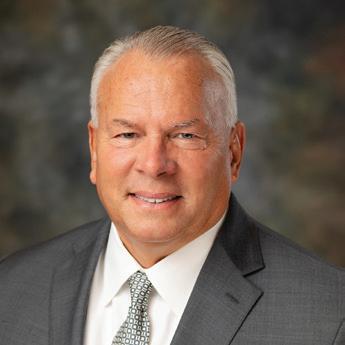

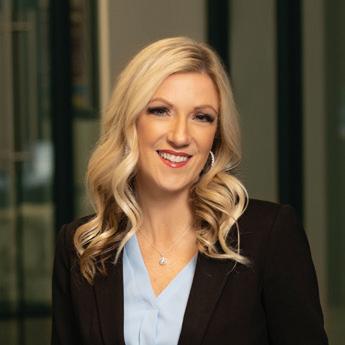
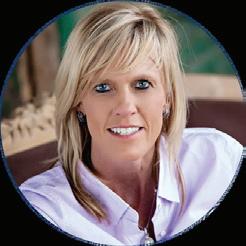
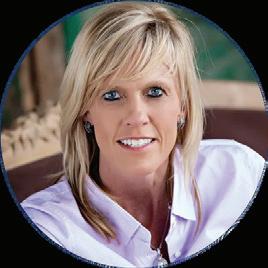



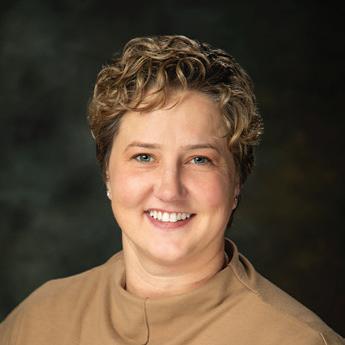
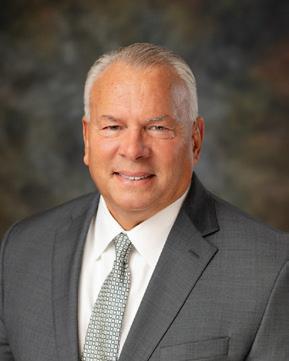


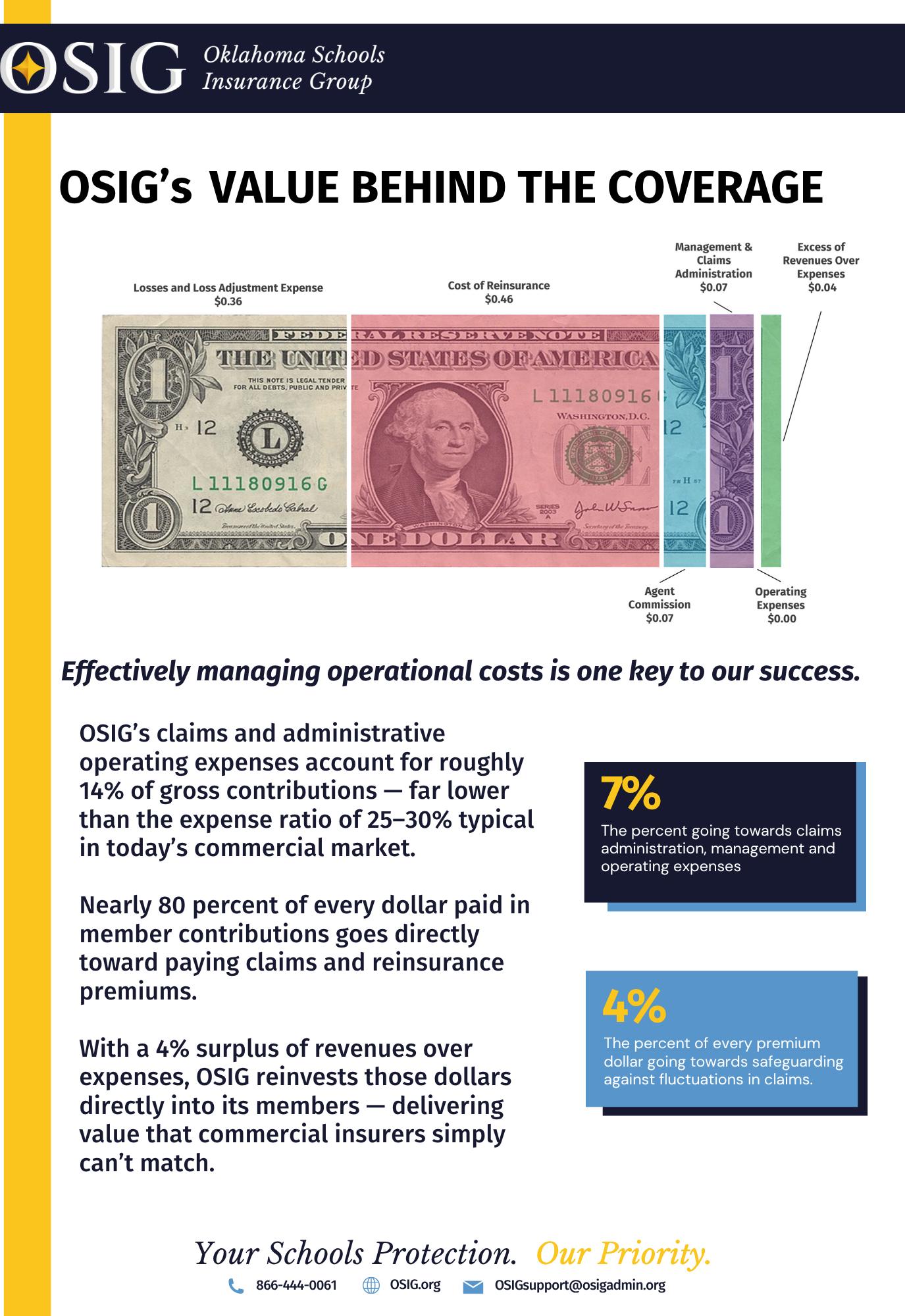
Your Oklahoma Partner

Our team provides Oklahoma with a different opinion. When you partner with us, you get the unique value of working with a local provider. Not only are your dedicated representatives local to Oklahoma, but we also service your entire account from our Oklahoma City headquarters. From billing, customer service, claims, compliance support and technology, we deliver a local experience for you and your employees.
Benefits are confusing. Having a team in your own backyard to provide personal service, walk through a claim, or at times, hand deliver a benefits check, are not services you are likely to find anywhere else.
We’ll continue to help your staff:
Create a benefits package to accomplish their goals
Provide benefits education and enrollment support through one-onone benefits reviews and group meetings
Offer support throughout the plan year with any benefits questions you or your employees may have
American Fidelity has been a longtime partner with CCOSA. They have provided important services and products to Oklahoma school leaders and staff for many years. American Fidelity offers a variety of programs to school leaders and staff with health and wellness options that can improve and protect their lives as they lead schools for student success.

1,2
Dr. Pam Deering Executive Director
at CCOSA

Laura Bullock
CCOSA Chairperson
OMLEA Past President Director of Special Services, Idabel Public Schools
Michelle Dalton
CCOSA Vice Chairperson
ODSS President Director Special Services, Krebs Public Schools
Dale Spradlin
OASA President Superintendent, Buffalo Public Schools
Dr. Stacey Butterfield
OASA President-Elect Superintendent, Jenks Public Schools
Joe Ballard
OASSP President Principal, Poteau HS
Blaine Wise
OASSP President-Elect Principal, Glenpool MS
John Potter
OMLEA President Assistant Superintendent, Pryor Public Schools
Skeeter Sampler
OMLEA President-Elect
Director Secondary Education, Lawton Public Schools
Amy Estes
OAESP President Principal, Hollis ES
Dr. Ryan Glaze
OAESP President-Elect Principal, Jenks East ES
Leslie Burnett
ODSS President-Elect
Director Special Services, Pryor Public Schools
Scott Farmer
PAC Representative Superintendent, Fort Gibson Public Schools
Dr. Gregg Garn
Higher Education Liaison University of Oklahoma
What a Difference a Day Can Make!
By Dr. Pam Deering, CCOSA/OASA Executive Director
District Level Services Program
The program offers significant benefits to members.
By Dr. Jeanene Barnett, CCOSA Director of Policy,
Getting Oklahoma Schools Ready for Winter
How to effectively handle seasonal changes.
By Derald Glover, OASA Assistant Executive Director
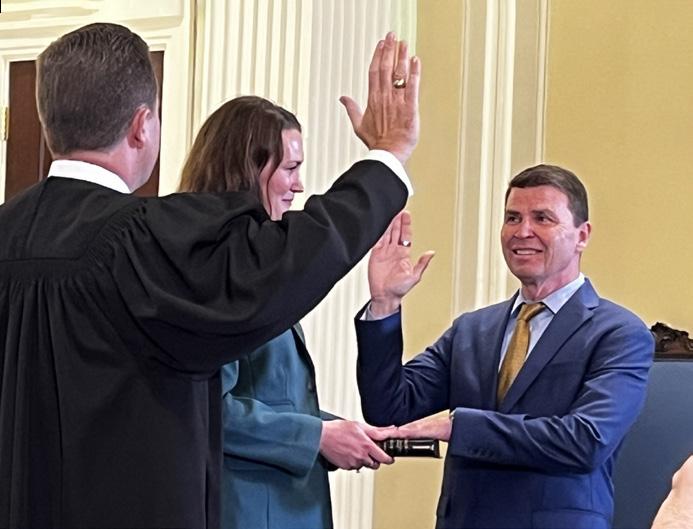
22 A New Chapter for Oklahoma Education
New State Supt. Lindel Fields sets a new and welcome tone at OSDE.
By Paige Kelpine, CCOSA Marketing, Events, and Corporate Sponsor Services Specialist
Is AI Going to Replace Coaching?
An expert weighs in on what AI can, and cannot, do.
By Jim Knight, Founder / Senior Partner, the Instructional Coaching Group
32 AI Thinking for District/School Leaders
After guiding leaders through AI in our Summer 2024 issue, a national leader in education technology and innovation is back with a vital 2025 update.
By Dr. Shawn Bishop, Deputy Executive Director for the Michigan Association of Superintendents & Administrators (MASA)
37 Oklahoma Leading the Way in AI Education
OSDE’s Office of AI and Digital Learning is laying the foundation for successful integration.
By Dr. Karen Leonard, Program Director, AI and Digital Learning, Oklahoma State Department of Education
39
Building the Future Together
CCOSA is leveraging AI to help shape a new strategic plan.
By Paige Kelpine, CCOSA Marketing, Events, and Corporate Sponsor Services Specialist
41 AI and Beyond: Guidance for Superintendents
CoSN, CCOSA, and OKSTE are supporting school leaders through an era of digital innovation.
54 Read to Lead
The John C. Maxwell Book Series
CCOSA leaders are studying four books by the legendary leadership expert leading up to his appearance at the 2026 CCOSA Summer Leadership Conference. In this issue, a synopsis of The 5 Levels of Leadership and a look back at The 21 Irrefutable Laws of Leadership from our Summer issue.
INTERNET DESIGNED FOR EDUCATION
Ensuring your students can fully participate in the digital learning age requires internet designed to support education.
As a division of the Oklahoma State Regents for Higher Education, OneNet is uniquely designed for education at all levels. From K-12 schools to higher education, OneNet understands your school’s needs and provides the high-speed connectivity required to fulfill them.
OneNet powers more than 250 K-12 schools, 45 technology center campuses and every public higher education institution in Oklahoma.

Learn


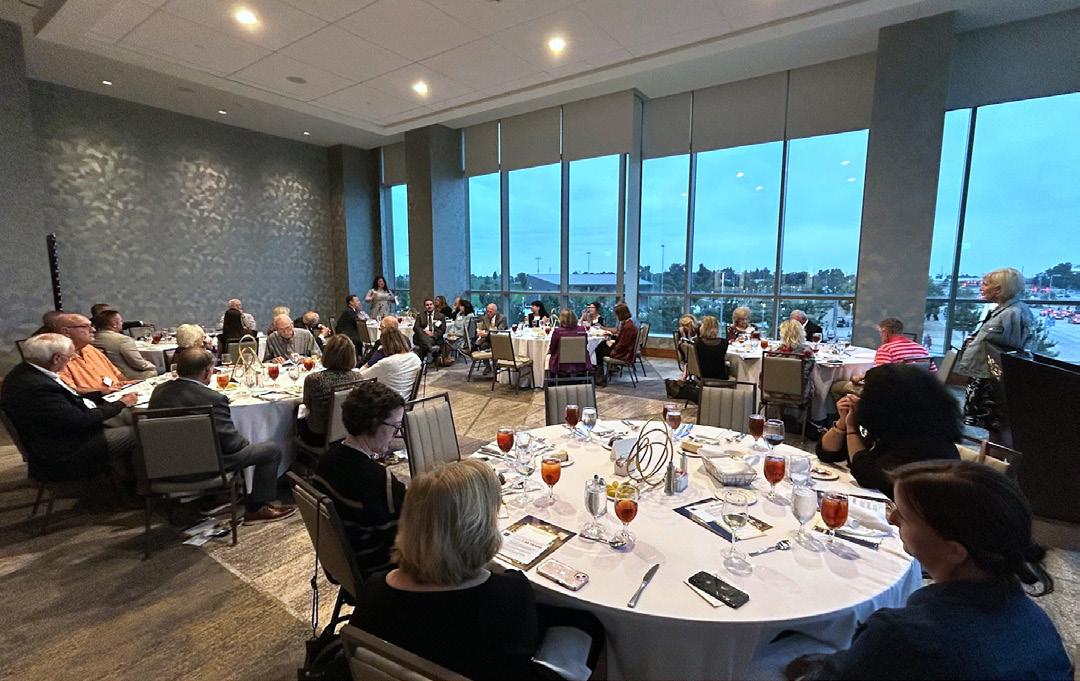
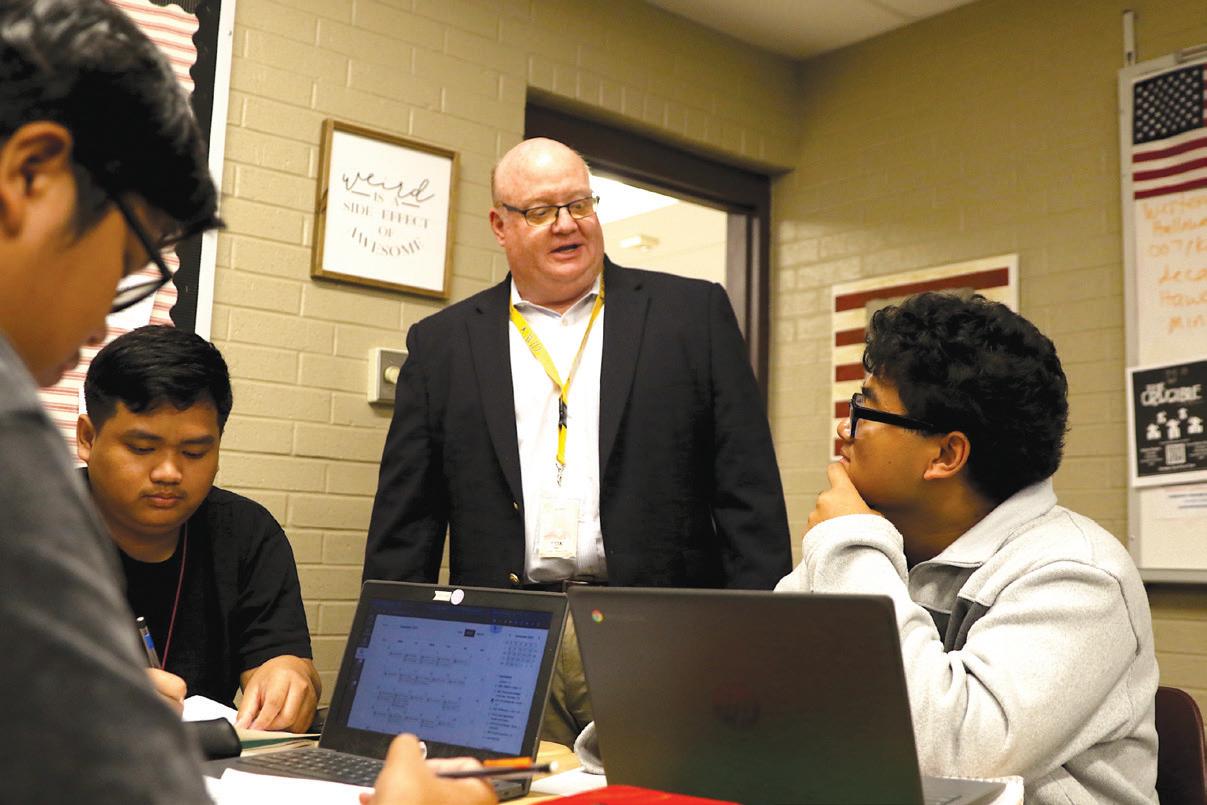
School
CCOSA Staff
Dr. Pam Deering
CCOSA/OASA
Executive Director
Derald Glover
OASA Assistant
Executive Director
Chris LeGrande
OASSP/OMLEA
Executive Director
Glen Abshere OAESP Executive Director
Andrea Kunkel
CCOSA General Counsel
ODSS Executive Director
Dr. Jeanene Barnett
Director of Policy, Research, and TLE
Kathy Dunn
Director of Professional Learning, State and Federal Programs
Paige Kelpine
Marketing, Events & Corporate Partner Services Specialist
Cynda Kolar
Business Manager
Lynne White OAESP Executive Assistant & Assistant to the TLE Director
Nicole Donnelly
Membership Coordinator & CEC Executive Assistant
Jen Knight
Executive Assistant
Kasiah Mims
OASA Executive Assistant
Catherine Goree
OASSP/OMLEA/ODSS Executive Assistant
Leadership Conversations
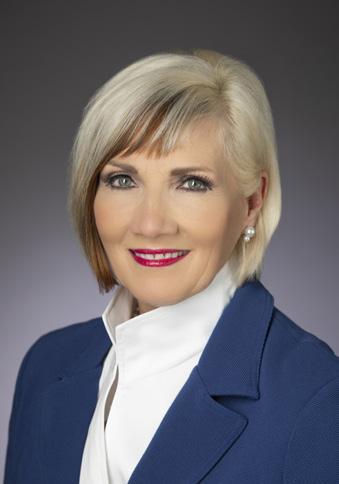
What a Difference a Day Can Make!
Dr. Pam Deering, CCOSA/OASA Executive Director deering@ccosa.org
October 1 is always a very important day for schools; however, this day began as a new day for Oklahoma and public education! With the resignation of the now previous State Superintendent and the appointment of Mr. Lindel Fields as the next State Superintendent, we had a lot to celebrate!
Within a matter of hours, we heard positive words about our schools and teachers. Within a matter of hours, we heard about a future plan for education in Oklahoma with a focus on literacy, career paths, and teacher recruitment and retention. Within a matter of hours, we heard about his leadership with his statement, “If you’re not taking care of students, take care of someone who is.” A servant leader’s words, and words we have longed to hear!
We feel HOPE! State Superintendent Fields is already reaching out to “right the ship.” Messages from the Oklahoma State Department of Education (OSDE) are flowing to all educators and parents. I have received multiple reach outs as well with requests to work collaboratively and build our relationships once again. How refreshing!
As Supt. Fields works to correct so many things from the past administration, I want him to know that we will do all that we can to assist him over the next 15 months. However, we also know that our focus must turn to the future of the State Superintendent’s office and the person who will be elected to that office – the filing period for candidates is ahead in April 2026, with primary elections to follow in June.
Future focus—the NEXT elected State Superintendent of Public Instruction
We must be thinking about that NOW as we learn more about those who are seeking the office. Who are they? What do they believe about public education? Do they support public education? Do they have leadership experience? Do they have school leadership experience? Do they understand the past to better lead for the future? There are many other questions we must ask of those candidates that will inform our own votes and those with whom we work.

How can CCOSA members be heard? Not only must we vote, but we should also contribute to the CCOSA PAC (Political Action Committee). Here is a link to the website to sign up for PAC contributions, and you’ll find a QR code on this page as well. Our goal is to reach $40,000 by the end of this fiscal year, June 30, 2026. Make your money count in ways that help candidates who value and support public education with their actions, not just words.
We are off to a great start on October 1, 2025, for public education. It is our goal to support our new state superintendent and his commitment to serving schools, students, and parents.
In this edition, we have more information about Mr. Fields in an article on page 22. Please read and be informed of his goals moving forward and what they can mean to the success of our students as we all work together for that common purpose.
Respectfully,

Dr. Pam Deering Executive Director Cooperative Council for Oklahoma School Administration (CCOSA) ■
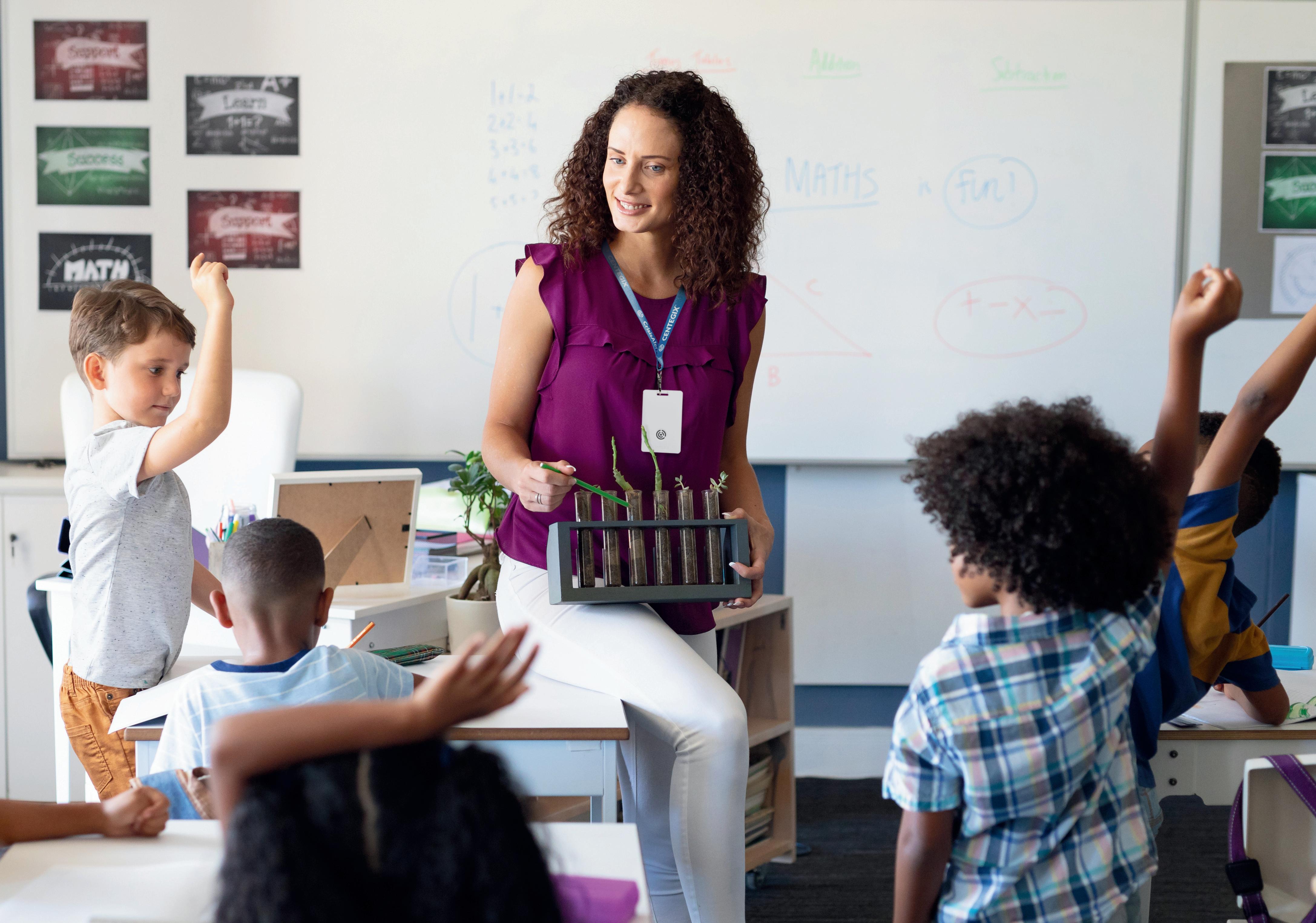

In an Emergency, Time Is the Most Critical Factor for a Positive Outcome CENTEGIX Safety Platform is compliant with Oklahoma Alyssa’s Law HB4073.
CENTEGIX® is the leader in incident response solutions. Our Safety Platform™, featuring our CrisisAlert™ wearable panic button, is the fastest and easiest way for staff to get help in an emergency, from the everyday to the extreme.
Oklahoma School Safety Starts Here


Leading Together
For 50 years, CCOSA has championed Oklahoma’s education leaders, and this year’s OSSBA/CCOSA Conference carried that legacy forward. School board members and school leaders from across the state gathered in Oklahoma City for the annual OSSBA/CCOSA Education Leadership Conference, which took place September 4-7 at the Oklahoma City Convention Center downtown. Take a look back at the highlights.

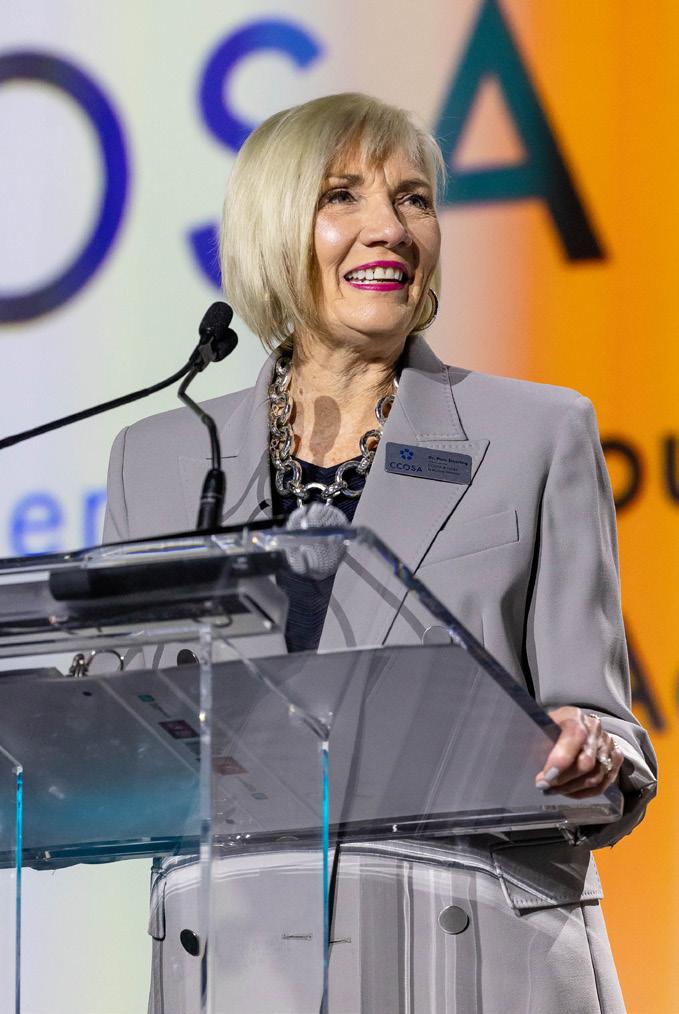
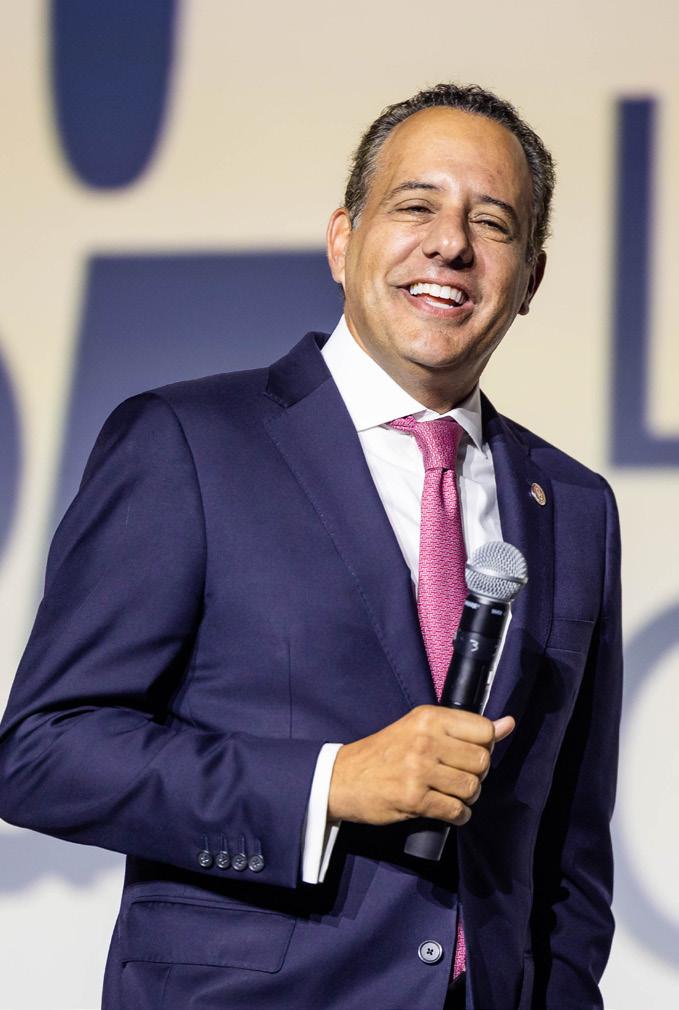
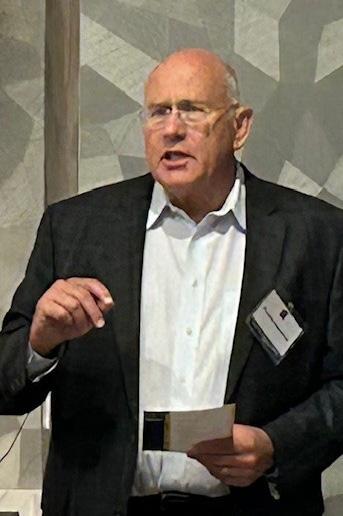
other
Dr. David Pennington, OASA and AASA Past President, shared his table’s ideas in response to questions about the leadership qualities that will be most critical in the next 10 to 20 years, the greatest challenges and opportunities ahead for schools and leaders, and the role CCOSA should play in shaping the next 50 years of leadership.
Keynote speaker Joseph Harroz, President of the University of Oklahoma, addressed conference attendees during the opening session on September 5. Among
topics, Harroz discussed the importance of all education institutions working together toward a better future for Oklahoma students.
At the conference, Dr. Pam Deering, CCOSA Executive Director, provided an update on the collaborative development of “Our Vision for Oklahoma Public Education and Oklahoma Schools” with local education leaders.

Meggan Wilson, OAESP Past President and Western Heights Assistant Superintendent with Dr. Gracie Branch, Associate Executive Director for Professional Learning at the National Association of Elementary School Principals (NAESP) and former OAESP Executive Director.
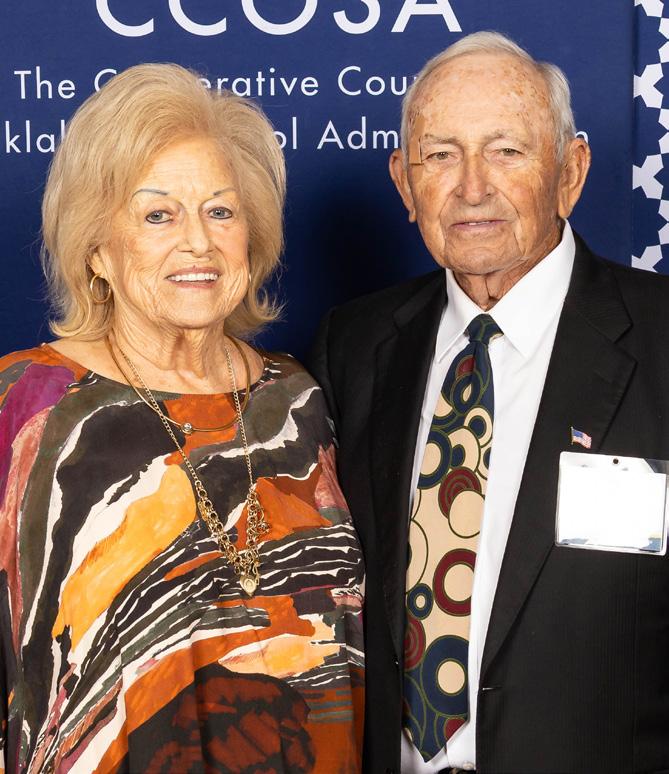
OASA Past President Joe Ogle with his wife Judy. Ogle served as OASA President in 1988-89, when the land for the CCOSA building was purchased.
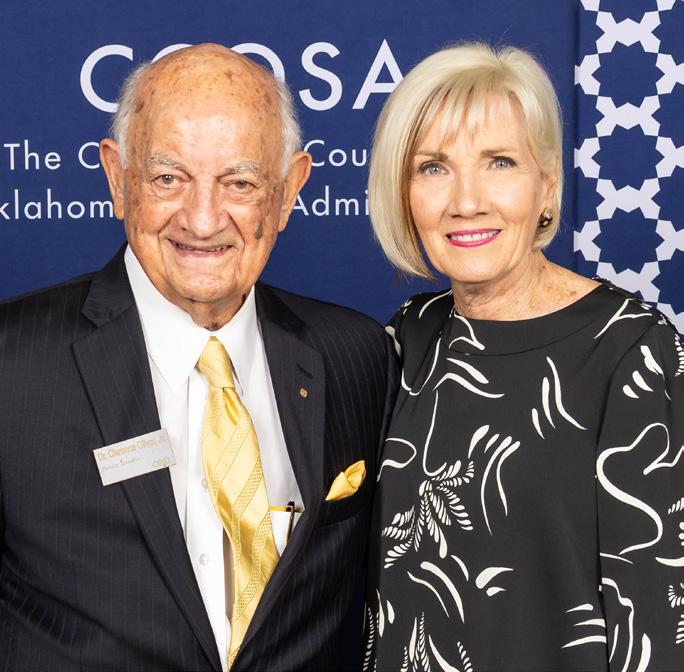
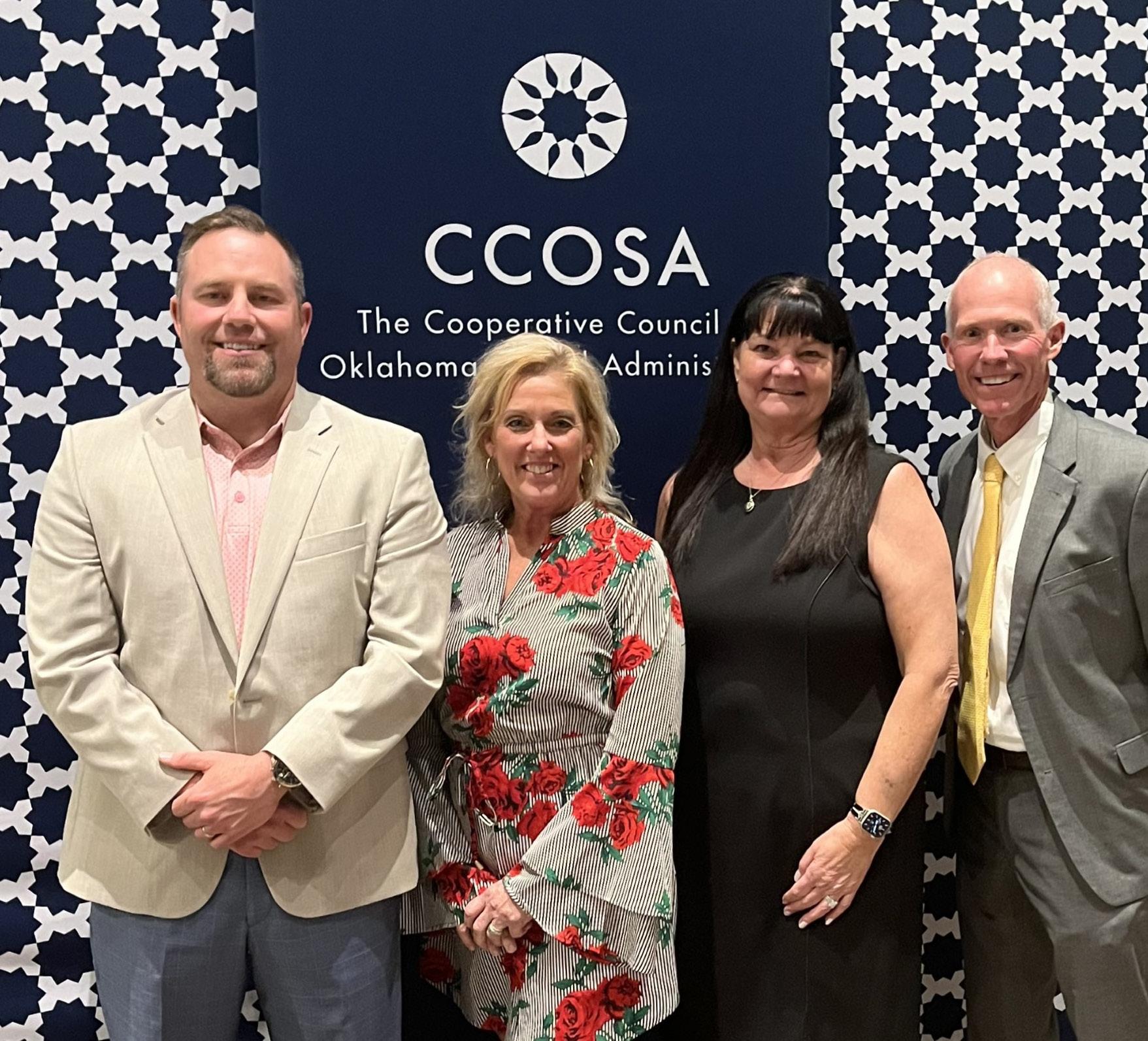
and
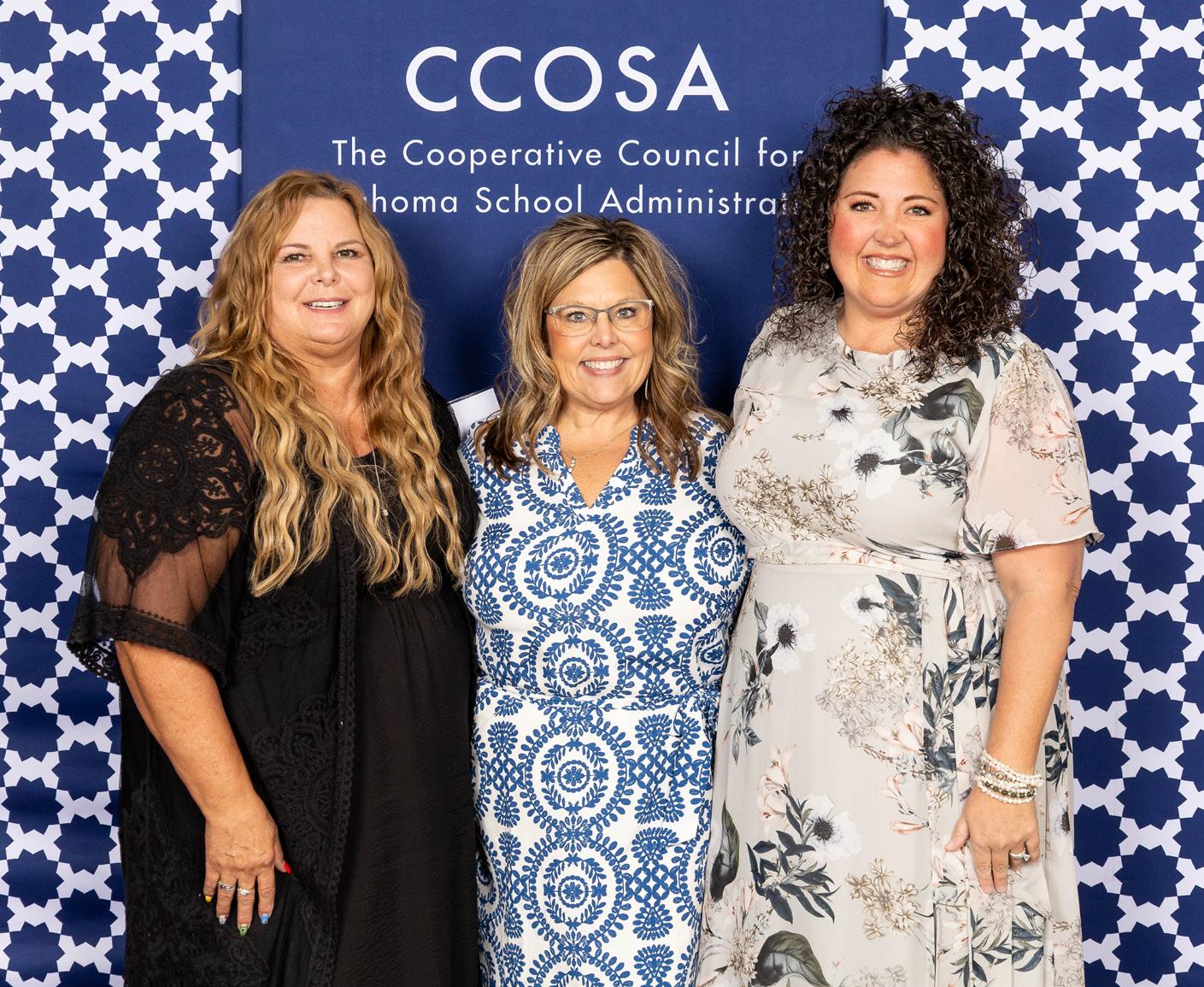
Left to right: Donna Boles, OAESP Past President and Principal at Perkins-Tryon Intermediate School; Traci Newell, OAESP Past President and Principal at Elgin Lower Elementary; and Ashley Hoggatt, OAESP Past President and Principal at Kirkland Elementary in Putnam City.
Left to right: Adam McPhail, OMLEA Past President and Director of Workforce Development for Lawton Public Schools; Linda Mace, OMLEA Past President
Associate Director of Dimensions Academy in Norman Public Schools; Laura Bullock, OMLEA Past President and CCOSA Executive Committee Chair and Director of Accountability and Special Services in Idabel Public Schools; and Chris LeGrande, OASSP Past President and OASSP/OMLEA Executive Director.
Dr. Clarence Oliver, OASA Past President and founding member of CCOSA, with Dr. Pam Deering.




Physical Security: State-of-the-art access control, surveillance, and entry management.

Our Dual Defense expertise focuses on both physical security and cybersecurity solutions, ensuring that students and teachers can concentrate on the most important aspect of school: learning and growth. today’s challenges; we’re anticipating the needs of tomorrow, securing a foundation for education where every student can thrive in safety and confidence.



Seamless Integration: A unified approach ensures complete coverage and peace of mind.



E-rate Service Provider: Our dedicated E-rate team ensures we are meeting deadlines and compliance requirements.
Ongoing IT Support: Serving as your entire IT department or filling in specific hard-to-staff areas.
Fit for You: Customized technology selection and installation tailored to meet the unique needs of your school. and endpoint security.

CCOSA District Level Services Program
Comprehensive Support and Professional Learning for School District Leaders
By Dr. Jeanene Barnett, CCOSA Director of Policy, Research & TLE
Expanded Support
The CCOSA District Level Services (DLS) program provides expanded services and resources to our members. Our goal is to strengthen education by offering exceptional programs that support school districts in the following areas:
■ Consulting Services
■ Professional Learning

■ The monthly Vernon Florence Newsletter
Professional Learning
■ CCOSA Quality School Framework Toolkits
Under professional learning (PL) services through the CCOSA District Level Services Program, districts have the option for all staff members to complete state and federally required professional development, including:
■ Alcohol & Drug Awareness
■ Autism
■ Blood-Borne Pathogens
■ Bullying Prevention
■ Child Abuse and Neglect; Child Sexual Abuse Awareness & Reporting
■ Digital Teaching & Learning
■ Dyslexia
■ FERPA
■ Hazardous Communications
■ Student Mental Health Needs
By the Numbers
■ Title IX: McKinney/ Vento & Homeless Assistance
■ Workplace Safety
■ Epinephrine
■ Suicide Awareness
When we began the professional learning services component of the program during the 2022-23 school year, 6,216 had participated by the end of September. So far this school year, over 27,000 have participated.
Professional Learning for DLS districts also provides access to five free registrations to the Law Conference, OASA Legislative & Mid-Winter Conference, Winning Strategies Playbook sessions, and popular Boot Camps for Federal Programs and School Budget (collectively valued at over $4,000). In addition, DLS districts have free access to State Finance Projections, formerly from Vernon Florence, that is now offered by CCOSA.
To date, 160 districts have signed up for District Level Services for 2025-26. This compares to:
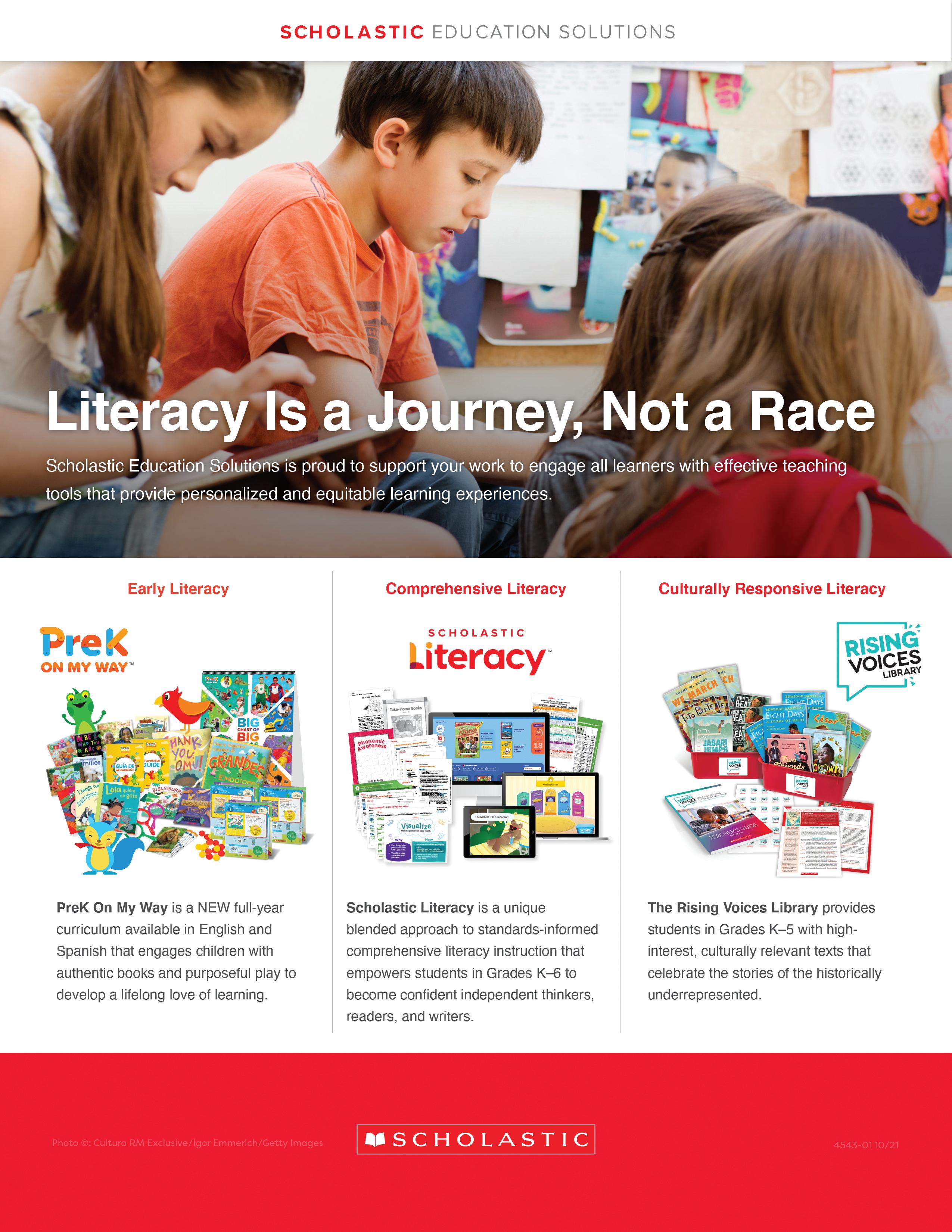


1. Ensure Heating Systems Are Ready
Even short cold spells can create problems if heating systems aren’t in peak condition.
■ Regular Inspections: Have HVAC systems, furnaces, and boilers checked early in the fall. Inspect filters, burners, and ductwork to ensure the system can respond efficiently to sudden cold fronts.
■ Energy Efficiency: Programmable thermostats are a smart investment in Oklahoma, where winter temperatures fluctuate. Proper insulation throughout the building helps maintain warmth without overworking heating units.
■ Backup Heating: Portable heaters or other supplementary heat sources should be available, particularly in classrooms far from central units, to handle overnight freezes or unexpected cold snaps.
Getting Oklahoma Schools Ready for Winter
Strategies to handle seasonal challenges effectively
By Derald Glover, OASA Assistant Executive Director
While Oklahoma winters are generally milder than those in northern states, they still present unique challenges for school leaders striving to keep students and staff safe and comfortable. Temperatures can drop quickly, and occasional snow or ice storms can disrupt daily routines. With the state’s unpredictable weather ranging from mild days to sudden freezes, preparing school facilities for winter conditions is essential. Our guide will help Oklahoma schools get ready for the colder months.
2. Prevent Frozen Pipes
Below-freezing temperatures can pose a risk of frozen pipes, especially during abrupt cold spells.
■ Pipe Insulation: Insulate exposed or outdoor pipes, particularly in older buildings or rural schools where freezing occurs more quickly.
■ Regular Monitoring: Custodial staff should check areas with vulnerable pipes — basements, exterior walls, or minimally heated spaces — daily when freezes are forecast.
■ Preventive Measures: Leaving faucets on a slow drip or opening under-sink cabinets can help warmer air circulate and reduce the risk of freezing.
3. Prepare Roofs and Gutters
Snow and ice may be infrequent, but when they occur, they can cause significant damage.
■ Roof Inspections: Check for loose shingles or structural weaknesses, especially on flat roofs prone to water accumulation.
■ Clear Gutters: Debris-free gutters and downspouts prevent ice dams from forming during melting and refreezing cycles.
■ Snow Removal Plans: Even modest snowfalls should be managed with a removal strategy for areas prone to accumulation.

4. Ice Storm Safety for Walkways and Parking Areas
Ice storms create especially hazardous conditions on sidewalks, parking lots, and entryways.
■ Stockpile De-Icing Supplies: Ensure sand, salt, and eco-friendly de-icing products are on hand well before the first freeze. Custodial staff should apply them at the earliest signs of ice.
■ Contract Snow and Ice
Removal: Sporadic heavy snow or ice means full-time removal staff may not be available. Securing service contracts early ensures prompt clearing of essential areas.
5. Maintain Indoor Air Quality
Tightly sealed buildings during cold weather can reduce ventilation, impacting indoor air quality and increasing the spread of illnesses.
■ Ventilation Systems: Ensure ventilation is working well in kitchens, gyms, and restrooms. A balance between heating and air circulation keeps air fresh and limits virus transmission.
■ Air Filters: Replace filters regularly to maintain air quality and reduce allergens, dust, and other pollutants in classrooms.
6. Prepare for Winter Emergencies
Although heavy snow days are rare, ice storms and severe weather can still force school closures.
■ Weather Alerts and Communication: Set up text alerts, emails, and phone notifications to inform parents, students, and staff about delays or closures. Test these systems regularly.
■ Backup Power and Supplies: Schools should have generators and emergency kits with flashlights, blankets, and first-aid supplies ready in case of outages. This ensures students and staff can stay safely on-site if needed.

Winter preparation in Oklahoma schools requires attention to both safety and the state’s unpredictable weather. By maintaining heating systems, protecting pipes, inspecting roofs and gutters, ensuring safe walkways, and planning for emergencies, schools can minimize disruptions. Thoughtful preparation allows Oklahoma schools to provide a secure, comfortable learning environment throughout the colder months. ■




A New Chapter for Oklahoma Education
New State Superintendent of Public Instruction
Lindel Fields Sets a Steady Course
By Paige Kelpine, CCOSA Marketing, Events, and Corporate Partner Services Specialist
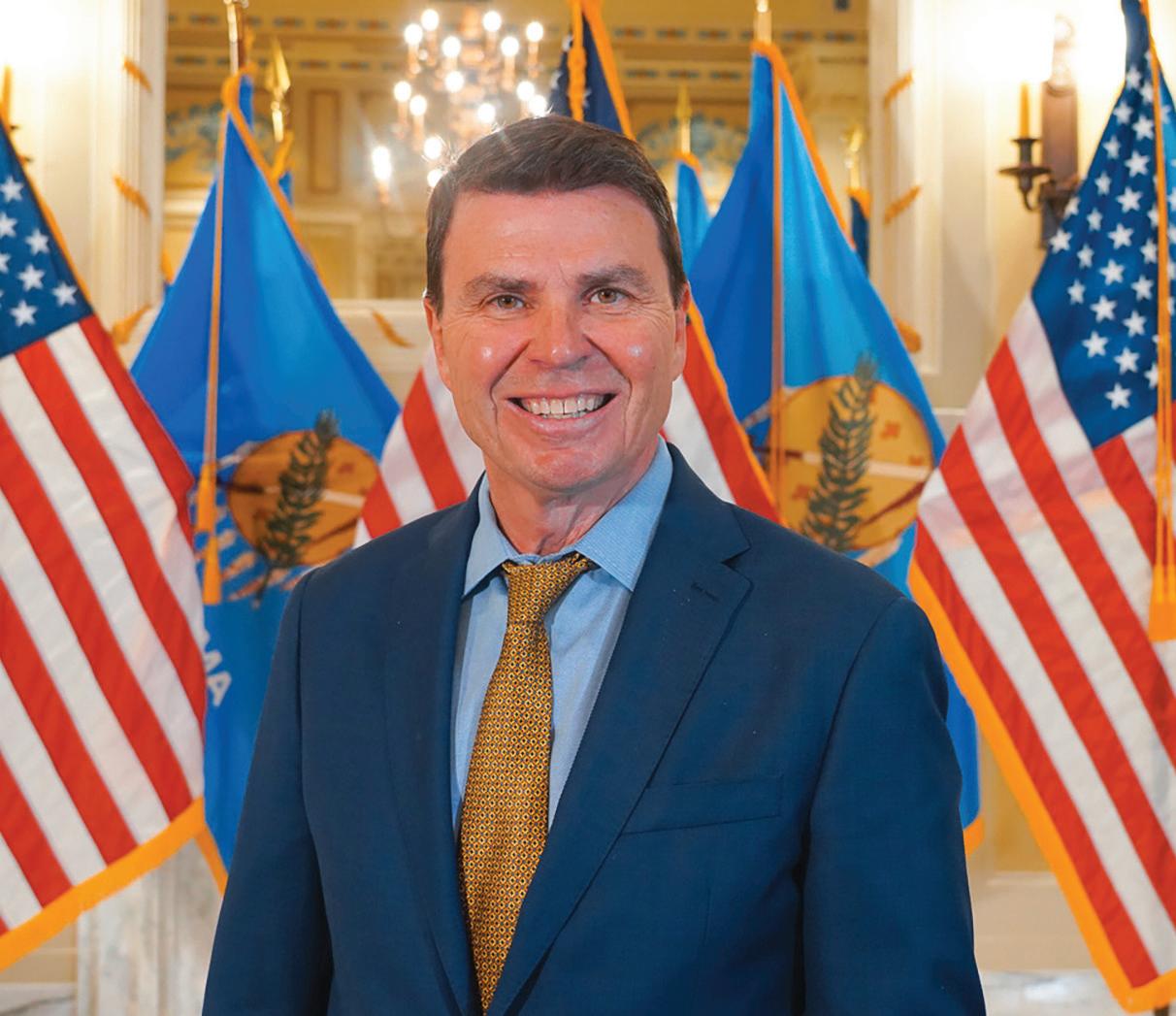
When newly appointed State Superintendent of Public Instruction Lindel Fields addressed Oklahoma’s teachers on October 6, 2025, his message was one of gratitude, stability, and partnership. “As we begin this new chapter together,” he wrote, “I want to take a moment to thank you – deeply and sincerely – for your unwavering dedication to the students of Oklahoma.”
Those opening words, warm and deliberate, mark a striking shift in tone for the Oklahoma State Department of Education (OSDE). After years of turbulence and turnover, Fields’ arrival signals an opportunity for renewed trust between the state agency and the educators and students it serves.
From CareerTech to OSDE
Before stepping into the state’s top education post, Fields built his reputation in the CareerTech system – a pillar of Oklahoma’s workforce and skills-training landscape. Over three decades, he served as teacher, administrator, and eventually superintendent and CEO of Tri County Technology Center in Bartlesville. His tenure there earned national recognition for innovation, student success, and workplace culture.
Fields retired from Tri County in 2021 but didn’t step away from education entirely. He founded Your Culture Coach, a consulting organization
devoted to helping leaders strengthen organizational health and communication. Those same themes of relationship-building, clarity, and purpose now anchor his leadership at OSDE.
Governor Kevin Stitt appointed Fields in early October 2025 to complete the unexpired term of former superintendent Ryan Walters, whose resignation left both political and operational gaps at the department. The governor called Fields “a proven consensus-builder” and “the right person to steady the ship.”
A Message That Sets the Tone
In an October 6 email to Oklahoma educators, Fields wrote not as a politician but as a fellow teacher. “Every day, you bring skill, creativity, and heart to the art and science of teaching. You are the foundation of our state’s future, and your work makes a lasting difference in the lives of our children.”
He emphasized that the department’s role is one of service: “The Oklahoma State Department of Education exists to serve and set a standard for excellence in education,” he said, reframing the agency’s mission from an enforcer of mandates to a partner in student success.
“My team and I are committed to restoring strong relationships, clear communication, and operational efficiency across our agency,” Fields continued. “We know that when we support educators, we strengthen schools – and when we strengthen schools, we elevate our entire state.”
Fields has also offered a guiding principle for his tenure: “Our job is to take care of the people who take care of the students. That’s why our new mantra is ‘If you’re not taking care of students, take care of someone who is.’” This statement places educators’ well-being at the center of his strategy.
Guiding Goals
In the same message, Fields narrowed the state’s focus to “two essential goals: literacy and career pathways,” a concise agenda grounded in the fundamentals of lifelong success.
“Literacy is the gift that unlocks the future for a child,” he wrote. “It opens doors to opportunity, confidence,
“Our job is to take care of the people who take care of the students. That’s why our new mantra is ‘If you’re not taking care of students, take care of someone who is.’”
— New State Superintendent of Public Instruction Lindel Fields
and lifelong learning.” Oklahoma’s literacy rates have lagged behind national averages, with roughly onethird of third-graders not reading proficiently by grade level. Fields’ stated approach is to rally schools around research-based reading instruction while aligning resources – professional development, assessment tools, and earlyintervention programs – to improve and sustain results statewide.
The second pillar, career pathways, draws directly on his CareerTech background. Fields insists that every student leaving high school should be “prepared for whatever comes next – whether that’s college, career, military service, or another meaningful pursuit.”
Fields also has made a point of reaching out to teachers, calling them “the heartbeat” of Oklahoma education. He has identified teacher recruitment and retention as one of the three key priorities guiding his tenure. That blend of academic rigor, workforce readiness, and a focus on recruiting and retaining teachers reflects a broader understanding of education’s purpose: empowering choice. “Together,” Fields wrote, “we can build a system that not only equips our students with the skills they need but also honors and empowers the professionals who guide them.”
Restoring Trust and Stability
Fields assumes office during a period of national tension over education, with debates over curriculum, parental rights, funding, and testing. Oklahoma, too, has felt those strains. His leadership style, as expressed in his letter, appears designed to lower the temperature, not raise it.
Where others might lead with policy pronouncements, Fields leads with listening and partnership. His stated goal is to “ensure every voice is heard” and to make OSDE a model of responsive government. That commitment to communication extends inward as well. Fields has emphasized the importance of
operational efficiency, framing it as a moral responsibility to ensure that taxpayer dollars and educator time are used wisely.
For many in public education, that message of respect feels overdue. Teacher morale and retention remain major challenges; roughly one in five new Oklahoma teachers leaves the profession within five years. By emphasizing partnership instead of confrontation, Fields hopes to slow that exodus and remind teachers that the department is on their side.
A Servant Leader’s Mindset
Those who have worked with Fields describe him as a “servant leader” –a phrase perfectly aligned with K-12 education, where the focus should always be on student success. His letter’s closing lines capture that identity perfectly: “Thank you for all that you do for our students, families, and communities. I am grateful for your partnership and excited for the work ahead.”
That sense of partnership is not only central to his leadership but frames the way he intends to rebuild trust and morale in Oklahoma education.
Looking Forward
In the months ahead, Fields will face the challenge of translating his vision into tangible initiatives. He has signaled that new literacy grants, regional career pathway partnerships, and professional development networks are among the priorities he intends to explore. Success will be measured not only in test scores or graduation rates but in trust rebuilt between schools and state, educators and agency, parents and public institutions. Fields has called this period “a new chapter.” If he succeeds in writing it well, Oklahoma may rediscover what public education at its best can be: a shared enterprise of teachers, families, and leaders working toward a common goal –the success of every child. ■
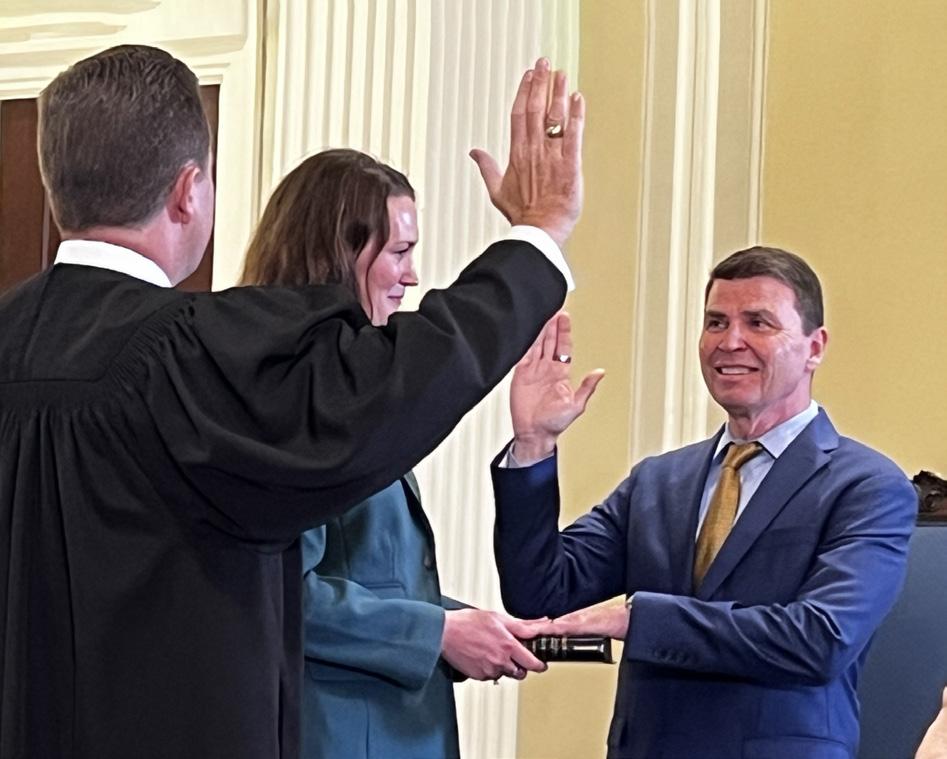
Oklahoma Supreme Court Chief Justice Dustin P. Rowe swears in State Superintendent of Public Instruction Lindel Fields on Oct. 7, 2025, with his wife Leigh Ann by his side.
Leading With Purpose
From CareerTech to the State Department of Education, Lindel Fields’ bio reveals a career built on culture, trust, and communication.
Lindel Fields is a nationally recognized education and leadership expert with more than three decades of experience transforming schools, agencies, and businesses. As Oklahoma’s State Superintendent of Public Instruction, his focus is on raising reading proficiency, strengthening teacher recruitment and retention, and expanding career pathways for students statewide.
Before his appointment, Fields served as CEO and Superintendent of Tri County Technology Center in Bartlesville, leading the district to national acclaim, including the 2018 Malcolm Baldrige National Quality Award and multiple top 10 rankings on Fortune’s Great Places to Work list.
His career began in 1991 as a horticulture instructor, eventually expanding into leadership across Oklahoma’s CareerTech system. After retiring from CareerTech, Fields founded Your Culture Coach, a consulting firm helping organizations build trust, improve communication, and foster thriving workplace cultures. His clients have included schools, tribal nations, state agencies, and private enterprises.
Fields believes strong leadership and healthy organizational culture are essential to community success. His mission is to partner with leaders to create environments that are both excellent and equitable because when leadership is strong, outcomes follow.
COURTESY ERIN CHRISTY, KJRH
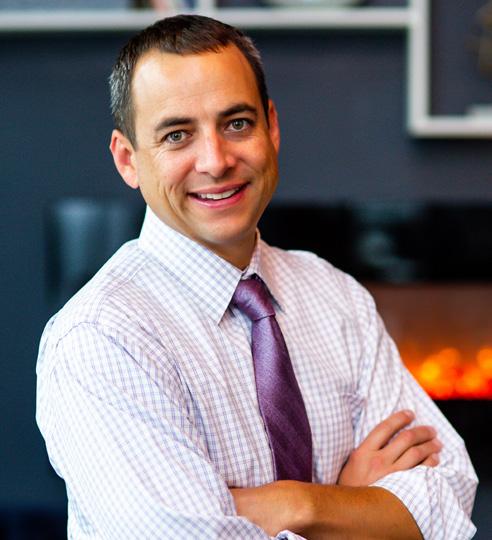
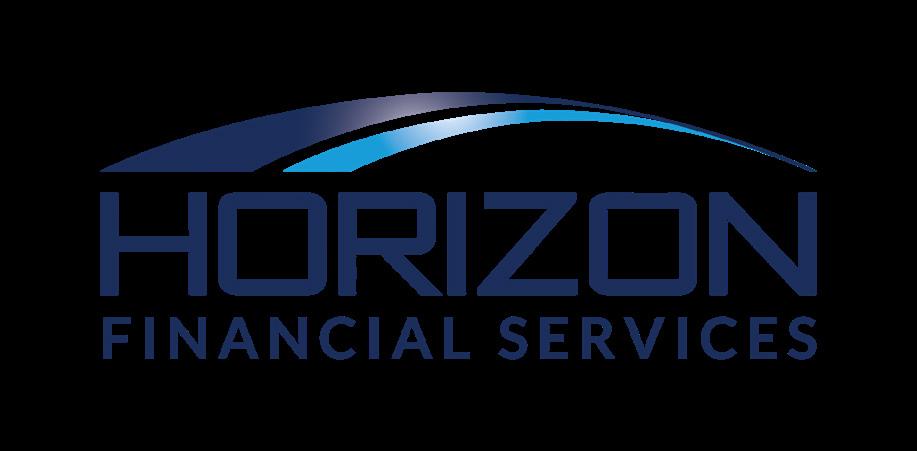


From Distraction to Connection
How Schools Are Thriving Under the New Phone Policy
Oklahoma’s new cell phone law is making a noticeable impact in schools, and education leaders across the state are sharing positive results. From reinforcing existing policies to fostering stronger student engagement, the ban is helping create more focused and collaborative learning environments. Leaders report fewer distractions, greater consistency for staff and families, and improved peer interactions as students spend more time connecting face to face. While implementation has looked different in each district, the common thread is clear: With clear expectations, consistent enforcement, and community support, schools are experiencing smoother operations and stronger learning cultures.
“At Frederick High School, we have had the practice of students having their cell phones off and in their lockers for about eight years. While this new law wasn’t an adjustment at all, I’d like to share the challenges we faced the first few years we enforced the rule. At first, we did not have much consequence to the rule. If a student just gets a warning on the first offense, there will be lots of warnings handed down. That’s a waste of time. The first offense should bear with it some deterrence. On the first offense, the
student is given ISD. The second offense earns a three-day suspension, and the student can’t have his or her cell phone at school for the remainder of the semester. On the third offense, the student receives a five-day suspension and loses cell phone privileges for the rest of the year. The other challenge that is critical is that every single teacher and staff member must be consistent and not turn a blind eye to any student breaking the rule (law).”
– Randy Biggs, Principal, Frederick High School
Frederick High School Principal Randy Biggs, students, and faculty dressed in black on a recent Spy Day.

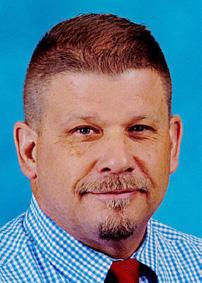
“The new cell phone policy the state adopted was something I was really weary of when we first adopted the policy. My mind instantly went to all the issues I suspected I would have with students and parents with this new law. To my surprise, it has been a true breath of fresh air for us at Latta Middle School. I have only seen one cell phone since the beginning of the school year. It has made such a difference in our students’ interactions with each other. I have heard from many of our students that they are glad they aren’t allowed to have cell phones at school as it has enriched their educational experience. I’m not naive enough to think we don’t have some phones being used, but I can tell you it has been a huge success and hopefully one that will make a difference in the lives of our student population.”
– Terry Painter, Principal, Latta Middle School
Texhoma Principal Tammie Breeden with her son, a junior who is working toward an associate degree at Tulsa Community College.

“After the first week of school, I had a teacher come in and let me know that students were doing well with the new policy and things were going well. One student shared, ‘I feel relieved to not have my phone,’ and that statement just made me feel that students are constantly checking their status or getting notifications, and this gives them time away from all of the ‘noise’ from technology.”
– Tammie Breeden, Principal, Texhoma Public Schools

Dr. Eric Fox visits seniors in Jenks High School’s AVID college readiness elective.
“We had concerns, but our students have responded to the challenge of keeping the focus on teaching and learning and reducing distractions. I even had a student tell me today that one of her challenges at school had been becoming distracted and losing focus. She specifically said the new law has helped her by keeping her mind off her phone and social media and tuning in with more consistency to her teachers and her classmates.”
– Dr. Eric Fox, Assistant Principal, Jenks High School
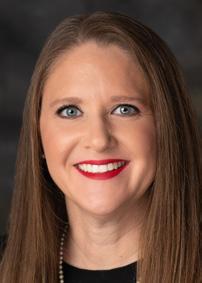
“Our school district has adopted a cell phone policy that extends beyond ‘bell to bell.’ This approach has helped to reduce many of the same challenges that disrupt learning, such as distractions, bullying, and conflict, from spilling over into arrival and dismissal times. These issues do not stop ringing when the bell does, and neither should our commitment to protecting students. By extending the ban, we have created a safer, more focused campus environment – from the moment students are dropped off in the morning until they are released back to their parents/guardians at the end of the day.”
– Jenny Affentranger, Principal, Grove School in Shawnee
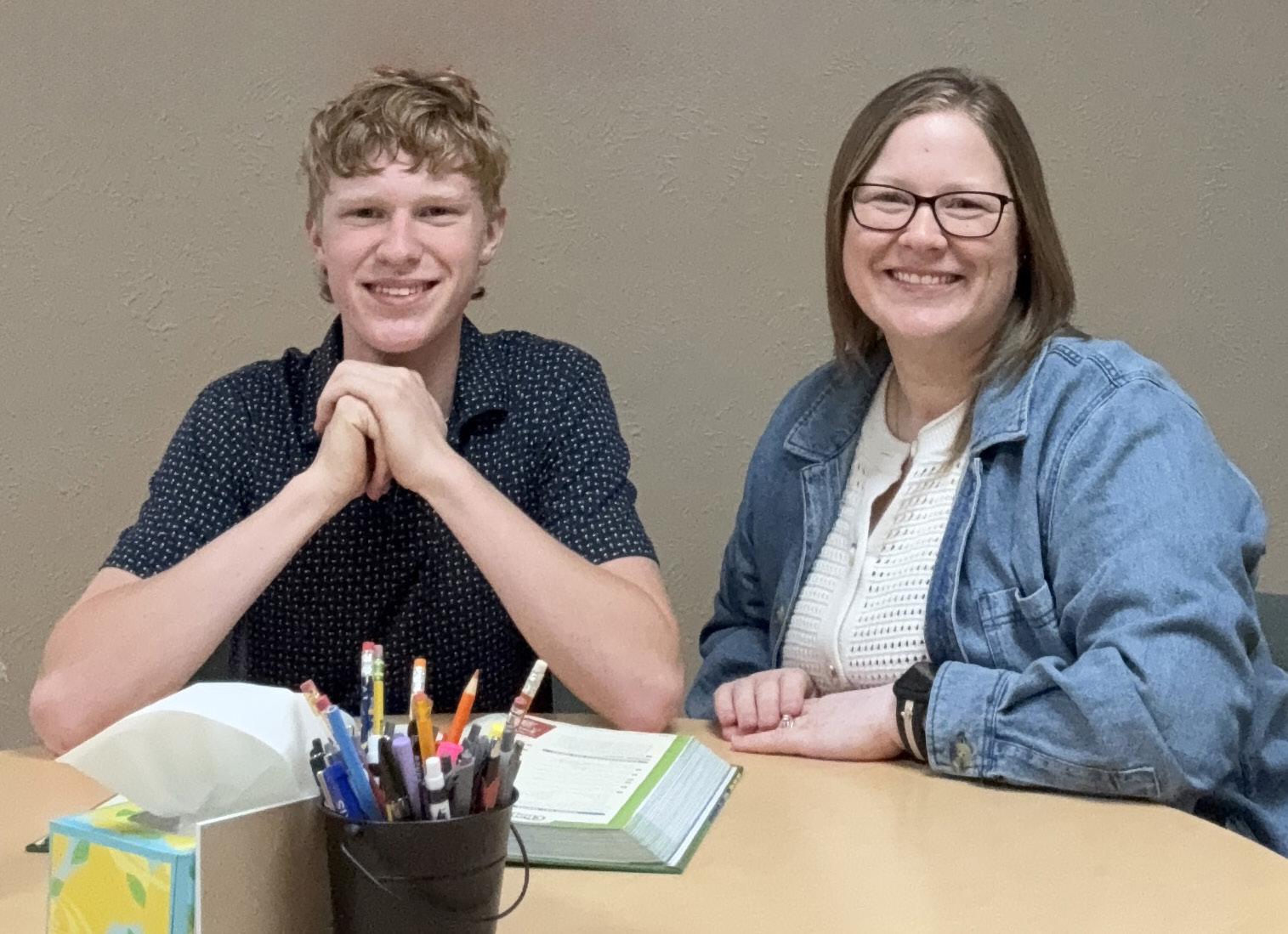
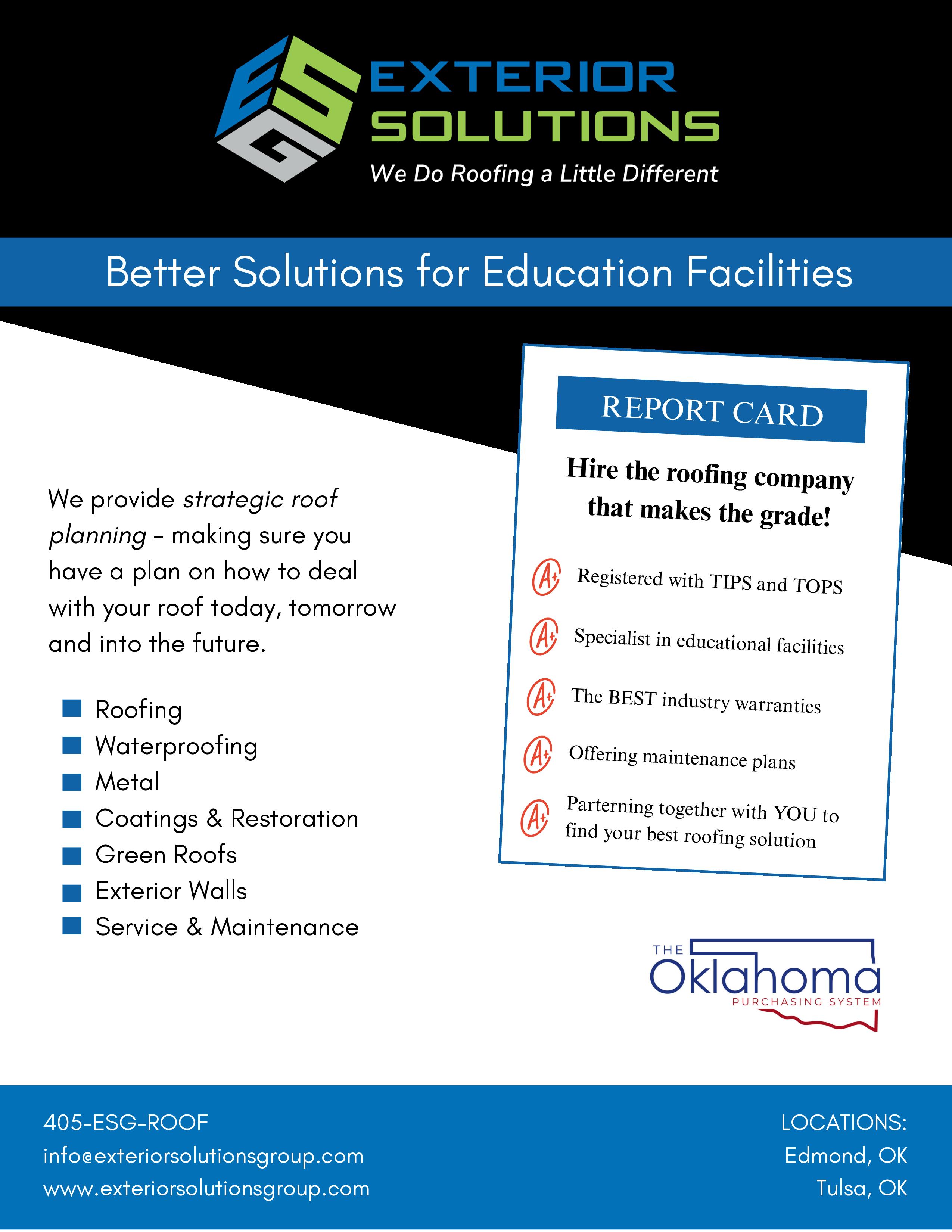

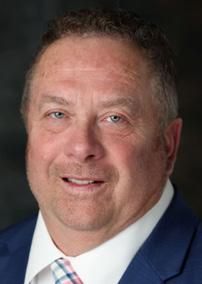
“One of my biggest concerns coming into the school year was how we were going to navigate the new law and the cell phone. We applied for and received the grant from the state and purchased Yondr pouches for each student. To my surprise, we have not had any issues at all. The students have been very receptive and have complied completely, with many students even commenting that they are enjoying not having the distractions. The vast majority of our parents support the policy. All in all, my worries were for nothing. This has been one of the best starts to the school year that I have experienced.”
–
Ron Sunderland, Principal, Woodward High School

“During the 2024-25 school year, Tahlequah Middle School students were only permitted to use their phones during lunchtime. Because of this, the biggest adjustment for students during the 2025-26 school year has been not having access to their phones during lunch. However, our students are doing an excellent job following the expectations and refraining from using their phones both at lunch and throughout the school day. Ultimately, the students and teachers at TMS have adapted extremely well to the cell phone policy thanks to both previously established guidelines and our current procedures. Students are engaging with one another through conversation and games at appropriate times, and both students and staff have adjusted seamlessly.”
–
Dusty Sifers, Principal, Tahlequah Middle School

“The start of any school year often brings new expectations, which can naturally cause some anxiety for both students and staff. Senate Bill 139 was no exception, but Yukon High School approached it with collaboration and care, developing a comprehensive and responsive student policy to ensure clarity and consistency across our schools. To support understanding, the administrative team created videos featuring real-life scenarios to help staff and students alike navigate the new expectations. As Brené Brown wisely states, “Clear is kind,” and our goal was to be just that – clear, supportive, and proactive. The response from students has been positive. Many have shared that they’re more focused in class and have even made new friends through increased face-to-face interactions. While the cafeteria is now buzzing with lively conversation and even some friendly card games, it’s a welcome shift that reflects stronger student engagement. Teachers are also reporting a notable increase in participation and assignment completion, contributing to classrooms that feel more collaborative and energized. This new policy has not only supported our academic goals but has also helped strengthen the sense of community on campus.”
– Melissa Barlow, Principal, Yukon High School ■
Dr. Bobbi Gillham with students at Pansy Kidd Middle School during a classroom observation.

“Since the beginning of the school year, the implementation of Oklahoma’s new state cell phone law has reinforced the procedures already in place at Pansy Kidd Middle School. This alignment has brought consistency and clarity for students, staff, and families, making expectations easier to understand and follow. Only two incidents of phones have been reported to the office during the first few weeks of this school year, and in both instances, parents were supportive of the school’s corrective measures. With fewer distractions from phones, teachers stated that students are more engaged in instruction and classroom activities, contributing to more productive learning environments. The law has also strengthened the school’s efforts to promote face-to-face interactions and positive peer relationships, helping to build a respectful and focused school culture that supports both academic growth and social development.”
– Dr. Bobbi Gillham, Principal, Pansy Kidd Middle School, Poteau Public Schools
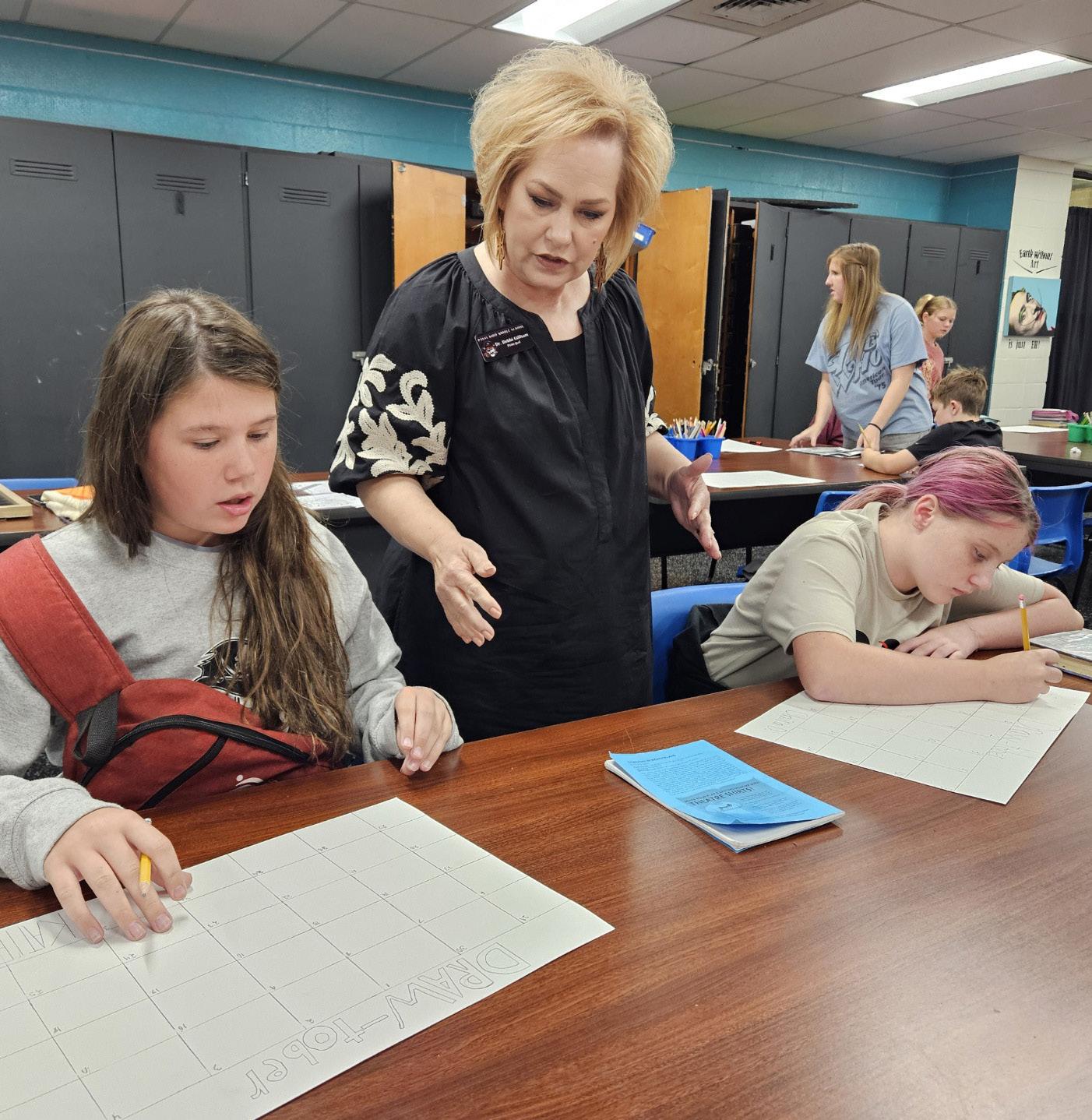
DON’T LET UNEMPLOYMENT COSTS SIPHON DOLLARS FROM YOUR DISTRICT’S CLASSROOMS.

WE WILL GUIDE YOU THROUGH THE EMPLOYMENT PROCESS FROM START TO FINISH!
Let OSSBA help your district with unemployment issues, plus save money and time by letting our attorneys handle your claims, follow ups, appeals and more. We also offer additional employment services to support school districts, including an online library of information and documents, training opportunities and legal information on employment issues.

Is AI Going to Replace Coaching?
An expert weighs in.
By Jim Knight, with help from his AI assistant, Maple
I hear the question all the time: Will AI replace coaching? Now, I’ve studied instructional coaching for 25 years, so I may be a little biased. But I also think those years have given me a good sense of what AI can and can’t do when it comes to coaching.
Here’s what I think, in a nutshell: AI won’t replace coaches, but coaches who use AI may replace coaches who don’t.
I’ve spent quite a bit of time exploring what AI can do and reading what others are saying. And I’ve gotten pretty clear on its strengths and limitations.
Effective coaches are skilled in at least four key areas. First, they show up in a way that makes people want to work with them – we call this the partnership approach. Second, they have coaching skills – especially listening and questioning – that help others think more deeply. Third, they use a coaching cycle that helps them move with agility through different stages of learning, all the way to setting and achieving meaningful goals. And finally, they understand the difference between weak strategies and strategies that really make an impact.
AI doesn’t have most of that. It’s not good at listening. It often cuts people off and moves forward without really taking in what was said. It’s guided by rules and algorithms, not by the principles of human connection that matter in coaching. So far, I don’t see artificial empathy replacing real empathy. Also, AI doesn’t use a coaching cycle effectively – it can’t adapt in the sophisticated way that a coach can. And while it does have access to a lot of strategic knowledge, some of it is made up, what AI experts call hallucinations, and sometimes it’s just wrong.
Here’s an example. There’s a wellknown joke about a drunk who’s looking for his keys under a streetlight. A police officer pulls up and asks him, “Did you lose your keys here?” and the drunk says, “No, I lost them over there, but the light’s better here.” That’s how AI can lead us off track – we might focus on something just because AI surfaced it, even though it’s not the most important thing.
So if coaches want to succeed, I think they need to understand how AI can be used as a tool for coaching.
When coaches use AI well, they’ll likely be more effective. But it has to be used well, and it has to be used by a coach. AI on its own is a technical, quick fix – and coaching is complex work that doesn’t respond well to quick fixes.
AI is a powerful tool for learning. And just like you can cut more trees with a chain saw than an axe, coaches who use AI may end up doubling, tripling, or even quadrupling their impact. But like any power tool, you have to know how to use it or damage will be done. ■

Jim Knight is a researcher, author, and professional development leader known for his work on instructional coaching and the partnership principles. He is the founder and senior partner of the Instructional Coaching Group, where he and his team support educators worldwide in improving teaching and learning. This article was originally published on Jim Knight’s blog. Reprinted with permission.


AI Thinking for District/School Leaders
In our Summer 2024 issue, Dr. Shawn Bishop helped school leaders make sense of ChatGPT and artificial intelligence. In this issue, he offers an essential 2025 update on this fast-moving technological innovation.
By Dr. Shawn Bishop
In the rapidly evolving landscape of education, artificial intelligence (AI) is shaping up to be the electricity of our era, so woven into daily life that we often forget it’s there. We don’t stop to marvel at how a refrigerator uses electricity, how the dehumidifier turns on, or that the TV shows us the news. When Google Maps quietly re-routes us around traffic, we don’t remark, “There’s electricity at work again.” In fact, this shift has already begun. AI is humming in the background – suggesting songs, running self-checkouts, and answering our Siri questions. Schools aren’t just the next frontier for AI; it’s already being braided in.
AI in education isn’t just about automating paperwork; it’s about magnifying what educators and leaders can do best. From lesson design to bus routing, from counseling to communication, its fingerprints are everywhere. The latest shifts – like multimodal AI and agentic AI – mean we’re no longer limited to real-time text inputs. Teachers and administrators can now summarize and analyze documents with ease, video and audio record short walk-throughs for analysis, translate messages into other languages with natural audio, and read or write in any language. The possibilities are growing, and so are the responsibilities.
But here’s the critical question: When should we lean on AI, and when should we hold back? Recently I heard it said, “Think of it as the choice between the stairs and the escalator.” Students need to climb “the stairs” when the cognitive workout matters, like wrestling with a tough proof or drafting an argument or learning to read. But once they’ve mastered the basics, the escalator makes sense, freeing time for deeper, more meaningful work. Leaders must help staff and students navigate those choices wisely. Encouraging discourse about what learning truly is, providing time for reflection on Bloom’s levels, and building in moments for deep thinking about where AI is best left out is time well spent.
Consider a few practical uses already changing practice:
■ Students can snap a picture of homework with their phones and ask AI to provide either a direct answer or a step-by-step walkthrough of the problem.
■ Students can give AI a grading rubric for a writing assignment along with their draft and ask for feedback, suggested edits, and even a predicted grade.
■ Students can use Gamma or other AI tools for instant presentation creation. Within 20 seconds, they can produce a polished slideshow, choosing to present it as is with minimal effort (though I’m not suggesting that), or use it as a springboard for editing, organizing, and drafting for deeper meaning.

“AI in education isn’t just about automating paperwork; it’s about magnifying what educators and leaders can do best.”
Educators and leaders also benefit:
■ Teachers reviewing K–5 math standards can spot overlaps and gaps with AI in minutes.
■ A principal can upload meeting notes and get a clean, time-stamped summary.
■ Districts can provide families with real-time translations of messages, voiced naturally in multiple languages.
■ Operations teams can scan transportation routes or staffing patterns for options – with human oversight always in place.
■ GPT/Gems can streamline work with discipline in the handbook, analyze school law, work with collective bargaining agreements, or investigate parts of Board policy.
These aren’t futuristic promises; they’re tools available today. The challenge is less about access and more about purpose. How do we roll them out responsibly? How do we make sure equity, privacy, and transparency keep pace with innovation?
One way forward is to adapt the change frameworks we already know. If we step back, the theories and practices for instituting other system change remain valuable with AI. We don’t
need to reinvent processes we’ve already found to work. Instead of a five-point manual, think of it as a storyline: Set the purpose, pick a handful of smart pilots, learn quickly, share results, and scale what works. These concepts aren’t “new.” We need to be mindful to purposefully include them in the work of AI work groups (aka an AI Task Force). Along the way, keep families and staff in the loop about what we’re trying, why it matters, and what we’ve learned.
To be specific, consider using an AI Task Force made up of students, staff, administrators, community members, and others representing all areas of your district. Have them start with mission, vision, and strategic goals. Ask them to reflect on what learning is and when it’s appropriate to take the stairs versus the escalator. Provide professional learning in AI tools so members build their personal knowledge before making decisions. Then give them time to outline guidance. Again, ask them to consider pilot programs, how to communicate to all groups, how to scale what works and expand the good. Also, it’s critical they are tasked with assuring everything works within the mission, vision, and strategic plan.
Let’s make time for specific AI tools and how to use them because that has value. Yet we can’t allow ourselves to be lost in the tool and not recognize the purpose behind using the tool. Therefore, it’s okay to consider using GEMS and GPTs for deeper diving into topics. It’s fine to discuss how NotebookLM can provide video and audio interactive podcasts that aid in learning. We can make time for how AI.Studio could change learning and how Sibme can change instructional practices. HOWEVER, purpose matters; over time all tools will change, but purpose will remain. The Pony Express isn’t delivering mail anymore, but the need for exchange of written information lives in other forms.
Done well, AI isn’t a replacement for human leadership; it’s a return of time and energy to the parts only people can do: build trust, give feedback, and lead with wisdom. ■ Dr. Shawn Bishop is the Deputy Executive Director for the Michigan Association of Superintendents & Administrators (MASA).
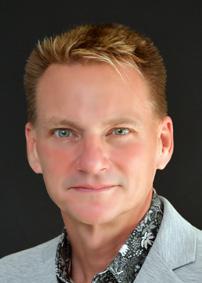

Oklahoma School Assurance Group

OSAG Saves Members 42% in Workers’ Comp Premium!
The Oklahoma School Assurance Group is excited to offer the fully insured, member -owned program that our schools are accustomed to, with better options now available! OSAG's motto is "to provide the most efficient & economical workers' compensation services to Oklahoma public schools", and in doing so, has chosen an improved, more economical alternative for our members.
OSAG has now partnered with AmTrust Financial Services as the insurance carrier for our program. This new partnership is saving 504 OSAG members from a 42% premium increase and offers additional member benefits including a new AmCares Nurse Triage Line, an extensive Risk Control Services Program (details located under the Member Resources / Safety Program & Material section of the OSAG webpage), and a future release to members of a FREE Learning Management System.
*The AmCares Nurse Triage line provides an immediate line to nurse care, assisting with how to properly help the injured worker, as well as completing the First Report of Injury for the district.
With this new transition comes different claims management. A detailed description of OSAG claims management procedures can be found on the OSAG webpage, www.okschoolassurancegroup.org, under the Claims section. Here you will find instructions for pre-7/1/25 claims overseen by CompSource Mutual Insurance Company, and all material/instructions for 7/1/25 to present managed by OSAG-AmTrust to include an OSAG-Amtrust Claims Instruction Video, AmCares Nurse Triage Reference Guide, & the 2025-2026 Claim Filing Packet.
OSAG is proud to serve Oklahoma schools by being the largest provider of workers’ compensation services. Since 1994, OSAG members have saved $116,364,539! This savings includes $33,750,604 in premium refunds, dividends, upfront premium savings, 2018 & 2021 Safety Equipment Grants, & the 2024 Shared Premium Credit award.
*Piccredit: citizensgeneral.com


Oklahoma Leading the Way in AI Education Preparing Students, Educators, and Communities for an AI-Powered Future
By Dr. Karen Leonard
Artificial intelligence is quickly becoming part of our daily lives, and Oklahoma has stepped forward as a leader in helping schools navigate this new landscape. The Oklahoma State Department of Education, through the Office of AI and Digital Learning, has been proactive in building a foundation that ensures AI is integrated into classrooms in a way that is both responsible and effective.
One of the state’s most important steps has been the release of Guidance and Considerations for Using Artificial Intelligence in Oklahoma K–12 Schools (Version 2.0). This updated framework gives districts practical direction while keeping the focus on student safety, privacy, and educational integrity. Alongside the guidance, OSDE has developed a Model AI Use Policy that districts can adapt to meet their local needs. Together, these resources help schools strike the right balance between embracing innovation and maintaining trust with families and communities.
Professional learning has also been central to Oklahoma’s approach. Teachers and school leaders have access to a wide variety of opportunities, from monthly virtual workshops and office hours to regional in-person sessions that bring AI training directly into communities across the state. For those who prefer flexibility, on-demand videos and free courses offered through OSDE Connect make it possible to learn at any pace. This sustained investment in professional development ensures that educators are not left to figure out AI on their own but have the ongoing support needed to use these tools thoughtfully.
The commitment extends beyond classrooms. OSDE has produced family guides, available in both
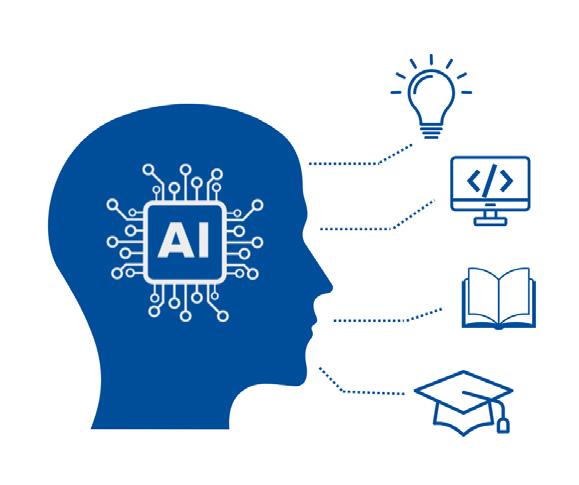



English and Spanish, to help parents understand what AI looks like in schools and how they can support their children’s learning at home. Including families in the conversation is an important piece of Oklahoma’s strategy and reflects a broader commitment to transparency and shared responsibility.
What sets Oklahoma apart is the way it has chosen to lead. Rather than responding reactively to the fast pace of technological change, the state has chosen a forward-thinking approach that combines policy, professional learning, and family engagement. This work acknowledges that challenges remain, such as addressing the digital divide, building teacher confidence, and keeping pace with the rapid development of new tool, but it also demonstrates a clear vision for the future.

Oklahoma’s goal is not simply to help students survive in a world shaped by artificial intelligence but to prepare them to actively shape that world themselves. With thoughtful guidance, strong professional learning, and a focus on equity, the state is creating a model that others will look to as they chart their own path forward. ■

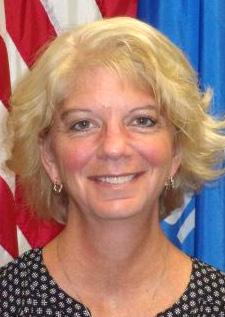
Dr. Karen Leonard is Program Director,
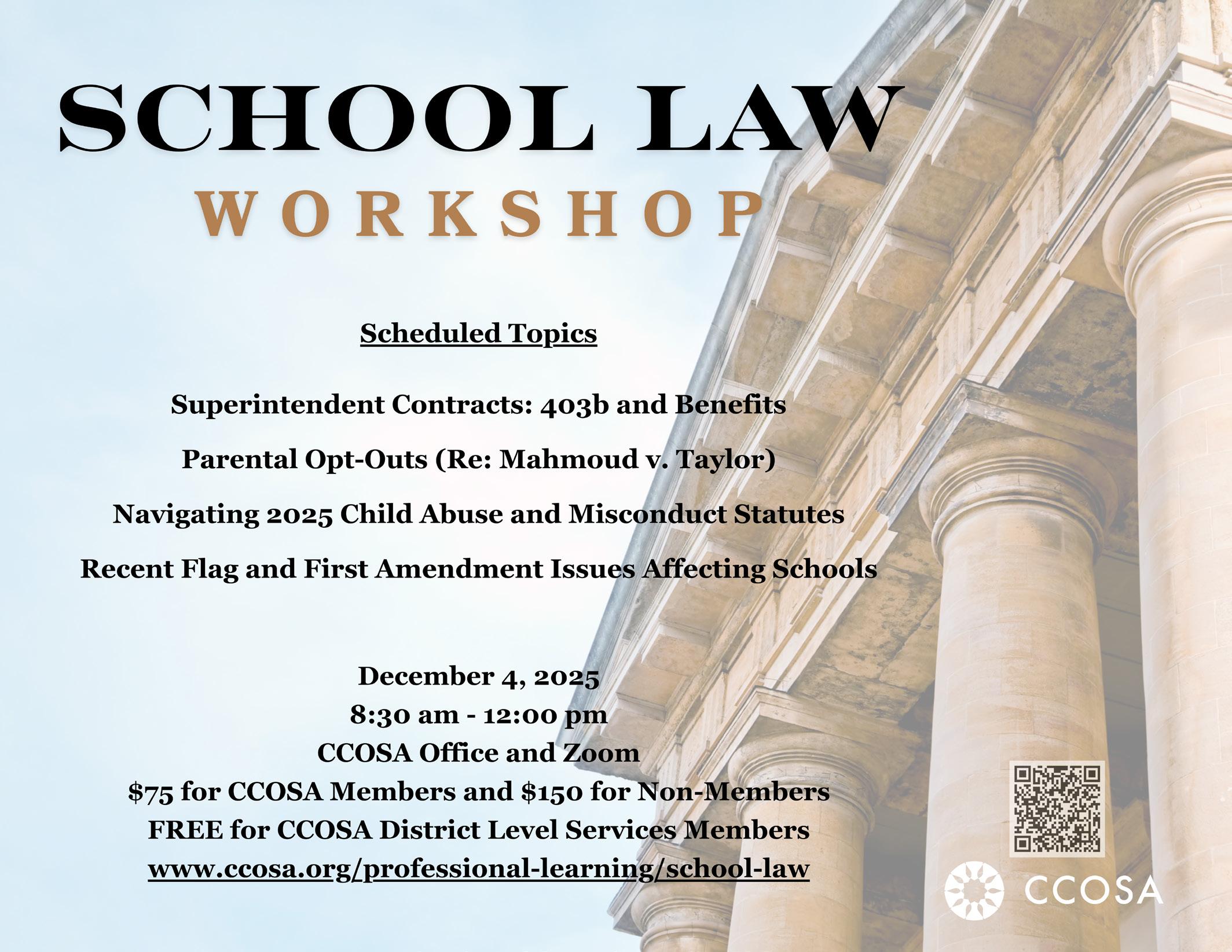
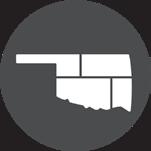
AI Reading Assistant
Oklahoma’s focus on intentional and purposeful instruction calls for literacy tools aligned to the Science of Reading. Students all over the nation are surpassing their peers with the help of their personal tutor, Amira.

• Listens as students read aloud to assess mastery.
• Assesses performance and pinpoints specific skills and gaps along Scarborough’s Reading Rope.
• Students progress through productive practice, delivering neuroscience-backed interventions to drive reading growth.

Building the Future Together
CCOSA Taps AI to Shape Its Next Strategic Plan
By Paige Kelpine, CCOSA Marketing, Events, and Corporate Partner Services Specialist

Strategic planning isn’t just about setting goals – it’s about listening. As CCOSA begins work on a new strategic plan, the organization is putting member voices at the center, with the help of an innovative tool: ThoughtExchange. Once finalized and approved by the Executive Committee, the plan is expected to launch in January 2026, setting the direction for the next chapter of the association’s work.
Instead of filling out a survey and never knowing what will happen next, members using the ThoughtExchange platform become part of a real-time conversation. Embedded AI analysis helps reveal the strongest themes as members share ideas. What emerges is a collective voice CCOSA leaders can act on.
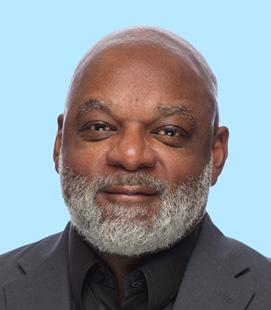
Dr. Colon Lewis, Vice President of the Leadership Network at the American Association of School Administrators (AASA), explains why this matters: “Traditional surveys capture data. ThoughtExchange captures dialogue. It turns members into a living conversation we can actually act on.”
This fall, CCOSA’s leadership team, led by Executive Director Dr. Pam Deering, will gather member input and focus on three key areas that will anchor the new strategic plan: strengthening member engagement, reimagining the future of professional learning, and sharpening advocacy efforts on behalf of school leaders. These priorities reflect the evolving needs of educators across Oklahoma.
Dr. Deering notes that the process builds on lessons learned during the pandemic. “After COVID, we realized we had to find new ways to deliver content. Our vision is to ensure we are meeting member needs where they are and for what they need.”
Dr. Deering sees success in very concrete terms: “School leaders will continue to join, and our membership

“AI in education isn’t just about automating paperwork; it’s about magnifying what educators and leaders can do best.”
— Dr. Colon Lewis
will continue to grow. Attendance at our conferences for professional learning will continue to increase.”
Her comments highlight how the new strategic plan will serve as both a road map and a vision document, laying out a clear direction for current members while also signaling to prospective members that CCOSA is committed to innovation, responsiveness, and long-term growth.
According to Dr. Lewis, “By engaging members directly, we trade assumptions for evidence. The plan reflects authentic priorities, not just top-down decisions.”
With the help of ThoughtExchange and the wisdom of its members, CCOSA is building more than a strategic plan – it’s creating a shared vision for the future of school leadership in Oklahoma. For members, the benefit is clear: Their voices directly shape the association’s path forward. “This process gives members the chance to move from being consumers of services to cocreators of the vision,” Dr. Lewis says. “That shift is powerful.” ■
Dr. Colon Lewis

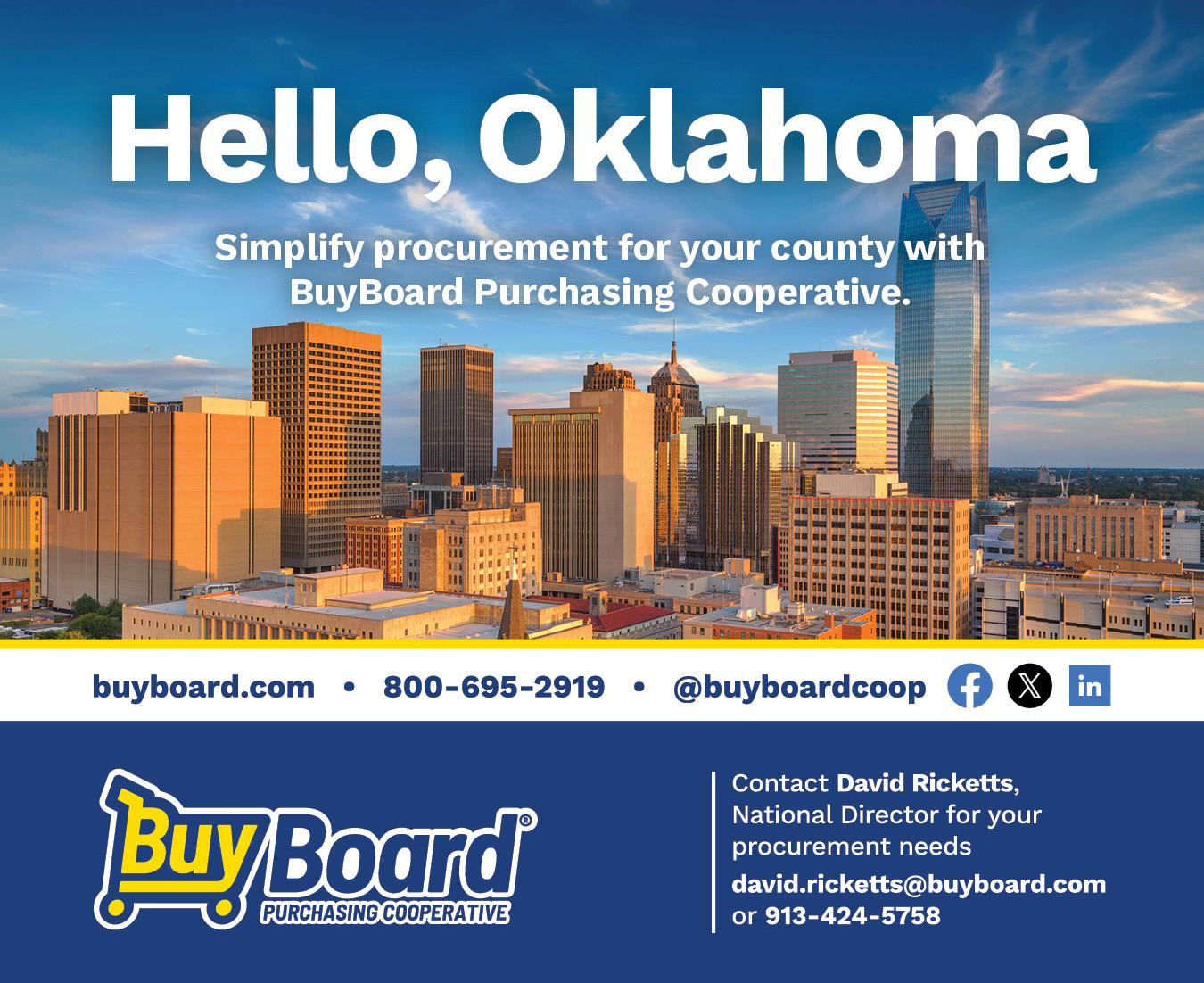
AI and Beyond: Supporting Superintendents in the Digital Shift
CoSN, CCOSA, and OKSTE are supporting school leaders in an era of AI and digital innovation.

The Consortium for School Networking (CoSN) in partnership with CCOSA and the CoSN Oklahoma state affiliate chapter, the Oklahoma Society for Technology in Education (OKSTE), is honored to support the work of current and aspiring superintendents and district leadership teams in leading all aspects of digital learning transformations.
CoSN AI District Leadership Summits
To help district leaders navigate the shift to artificial intelligence (AI), CoSN created the AI District Leadership Summits. These events offer a unique opportunity for leadership teams to build a practical road map for AI integration. At the summit, district leadership teams will work together to develop a six-totwelve-month action plan, strategies to align AI with district priorities, and ethical and equitable practices for their schools.
SPECIAL FALL OFFER:
Pay one standard rate for your first district registrant, then enjoy reduced pricing for every additional team member. Learn more and access the registration page for the upcoming summit in Denver on November 12-14.
CoSN/AASA edLeader Panel Broadcasts on the CoSN 2025 Driving K-12 Innovation Report
On Monday, September 8, 2025, CoSN, in partnership with AASA, launched Season 8 of the EmpowerED Superintendents edLeader Panel Series, sponsored by ClassLink and broadcast on edWeb.net. Season 8, which will run through March 9, 2026, began with a two-part series focused on CoSN’s 2025 Driving K-12 Innovation Report, which illustrates the hurdles, accelerators, and technology enablers that drive technology innovation within school district settings.
Part 1 of the two-part series focused on the current hurdles (challenges) and accelerators (megatrends) impacting innovation in K-12 education. The broadcast featured three leading edge superintendents who shared their perspectives on how two of the three topics covered in the CoSN 2025 Driving K-12 Innovation Report play out in their school districts. The superintendent panel included Dr. Karen Cheser, 2025 EmpowerED Superintendent of the Year, who serves as Superintendent of Durango Public Schools in Colorado; Dr. Kelly May-Vollmar, Superintendent, Desert Sands USD in California; and Glenn Robbins, Superintendent of Brigantine Public School District in New Jersey. Free registration to access the recording and/or podcast versions of the September 8 broadcast is available at this link.
Part 2 of the series, which also included the three superintendents featured in Part 1, aired on Monday, October 6, 2025. The focus of this broadcast was three specific technology enablers (tools) identified in the CoSN 2025 Driving K-12 Innovation Report: Generative Artificial Intelligence, Analytics and Adaptive Technologies, and Untethered Broadband and Connectivity. The Superintendents shared how they lead each of the identified technology enablers in their school districts and their impact. Free registration to access the recording and/or podcast versions of the October 6, 2025 broadcast is available at this link. ■
CoSN Membership: If you, your school, or your district would like more information about joining CoSN or getting more involved with CoSN, please contact membership@cosn.org

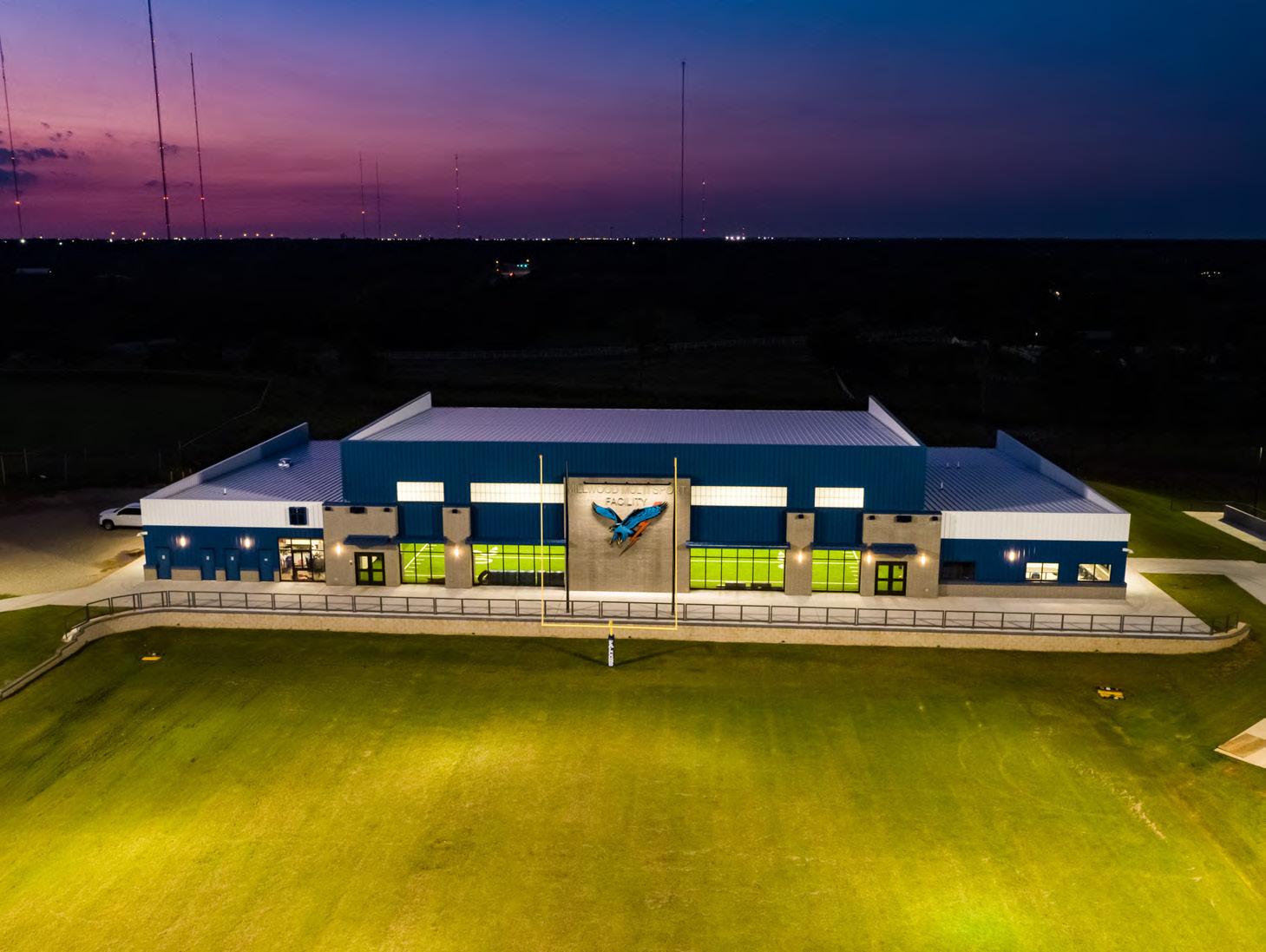

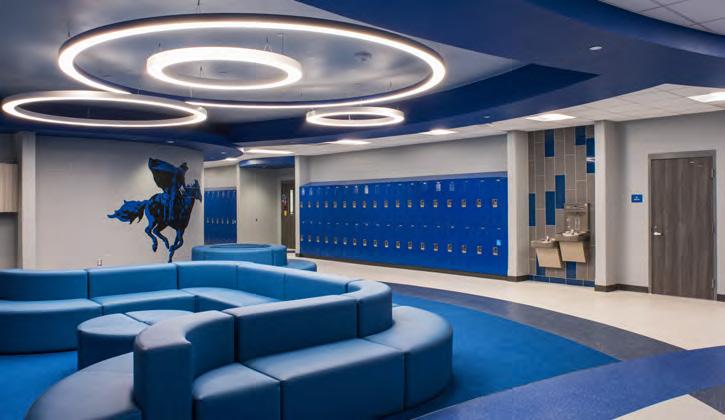
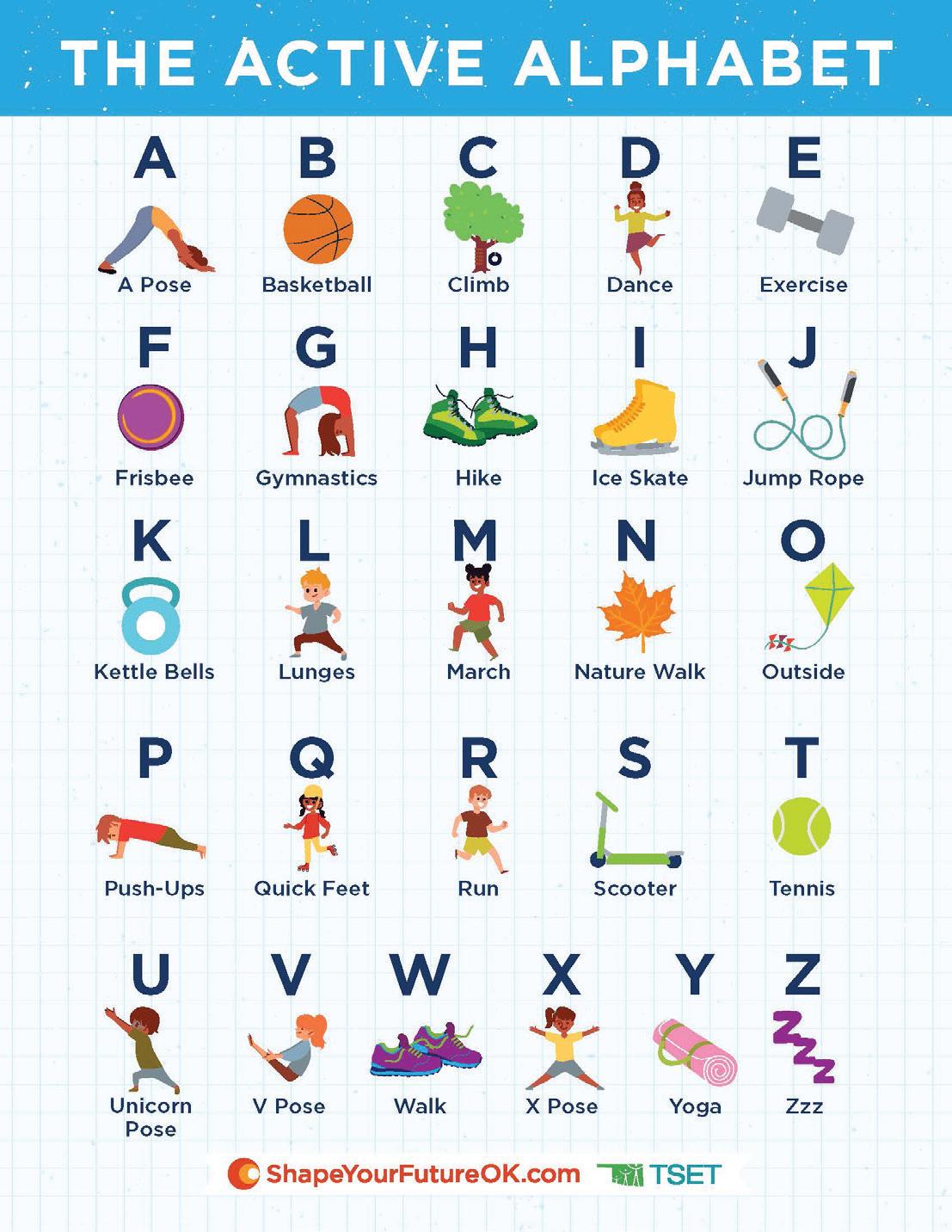

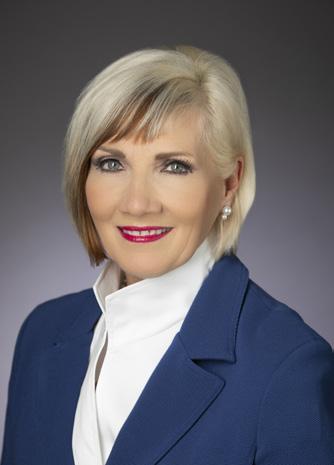
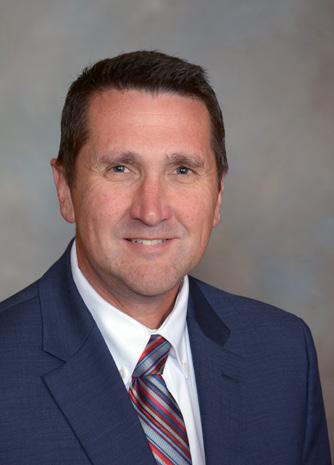
September is always a busy month for OASA as we begin our monthly OASA Executive Committee meetings. Under the leadership of OASA President Dale Spradlin, the book study on the Trust & Inspire book by Stephen M.R. Covey began with an overview leading up to the next discussion that will occur at each meeting with OASA Executive Committee members leading the discussions. A study guide for the
OASA Super Regional meetings started in Tulsa at the Tulsa County Association of School Administrators (TCASA) in midSeptember and have also been held at the Kiamichi Technology Center in McAlester and Moore Norman Technology Center’s South Penn branch. Three additional meetings are planned through the end of November. The purpose is to connect with our members where they are and to hear and share the great things happening in their districts throughout the state. Excellent programs have been presented at each location.
TCASA Super Regional Meeting presentations have included:
■ Future Educators Program at Union High Schools – Dr. John Federline, Supt., Union Schools
■ Long-Range Planning for Capital Expenditures – Jeff Beyers, COO, and Cody Way, CFO, Jenks Schools
■ A Winning Partnership: Special Education Extended Transition Program – Dr. Margaret Coates, Supt., Owasso Schools
■ Reaching the At-Risk Learner –Sherry Durkee, Supt., Sand Springs Schools
OASA
Dr. Pam Deering, CCOSA/OASA Executive Director Derald Glover, OASA Assistant Executive Director
book was developed by Kathy Dunn and can be found at this link. It is a great Cliff Notes version to guide discussions should members desire to use the book for that purpose.
At the same meeting, OASA welcomed Senator Adam Pugh, Senate Education Committee Chair, as our guest speaker as he outlined his priorities for education in the upcoming session. He is always willing to listen to our school leaders.
Lots of great things are happening for OASA members. We have launched a CFO Academy to identify 5A and 6A K-12 Principals and Central Office leaders who are interested in becoming chief financial officers. This program is joint with Oklahoma ASBO. CFOs in the state are leading a series of meetings with topics that will provide training in the areas of school finance and financial operations.
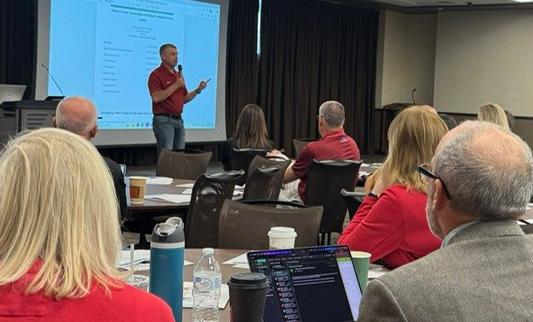
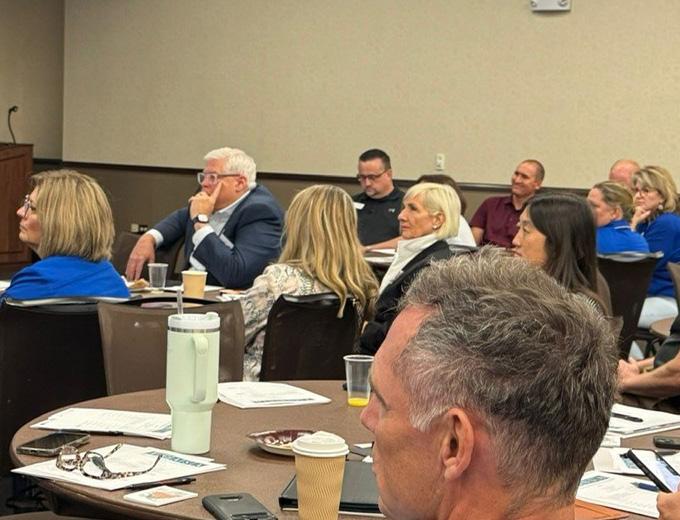
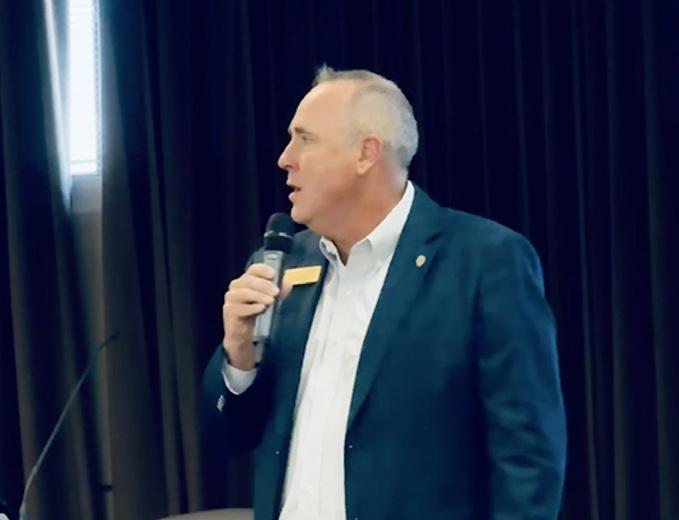
Mark Officer, Asst. Superintendent at Owasso Public Schools, addressed the education leaders gathered in the Grand Hall at Union High School for the Sept. 19 OASA TCASA meeting.
Attendees at the OASA TCASA Super Regional meeting at Union High School.
Dr. John Federline, Superintendent of Union Public Schools, at the TCASA Super Regional meeting.
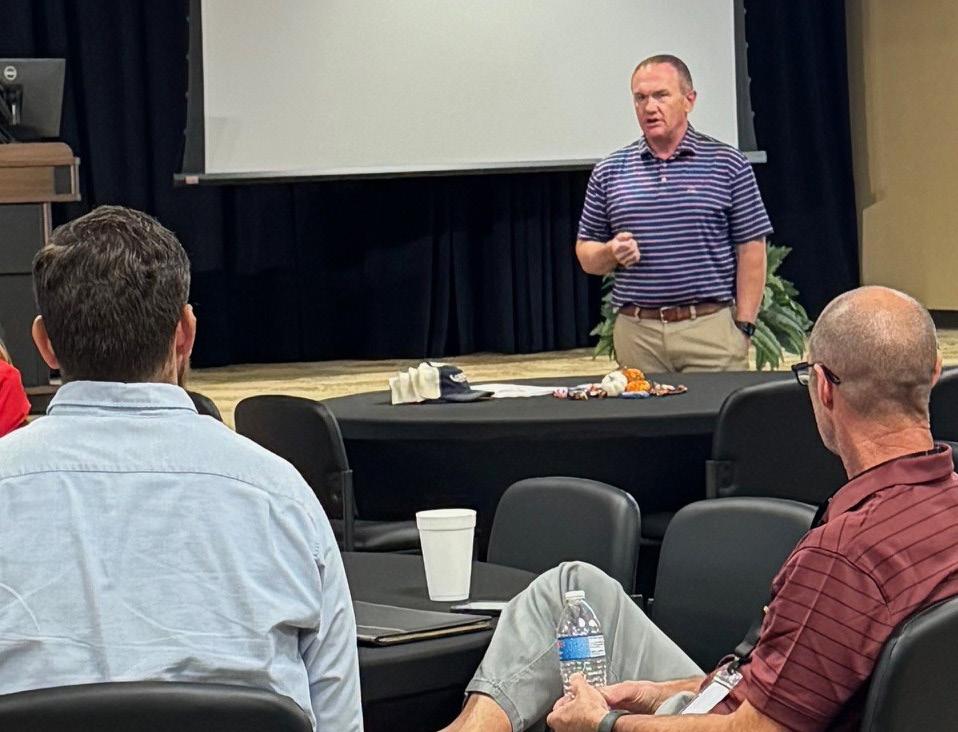

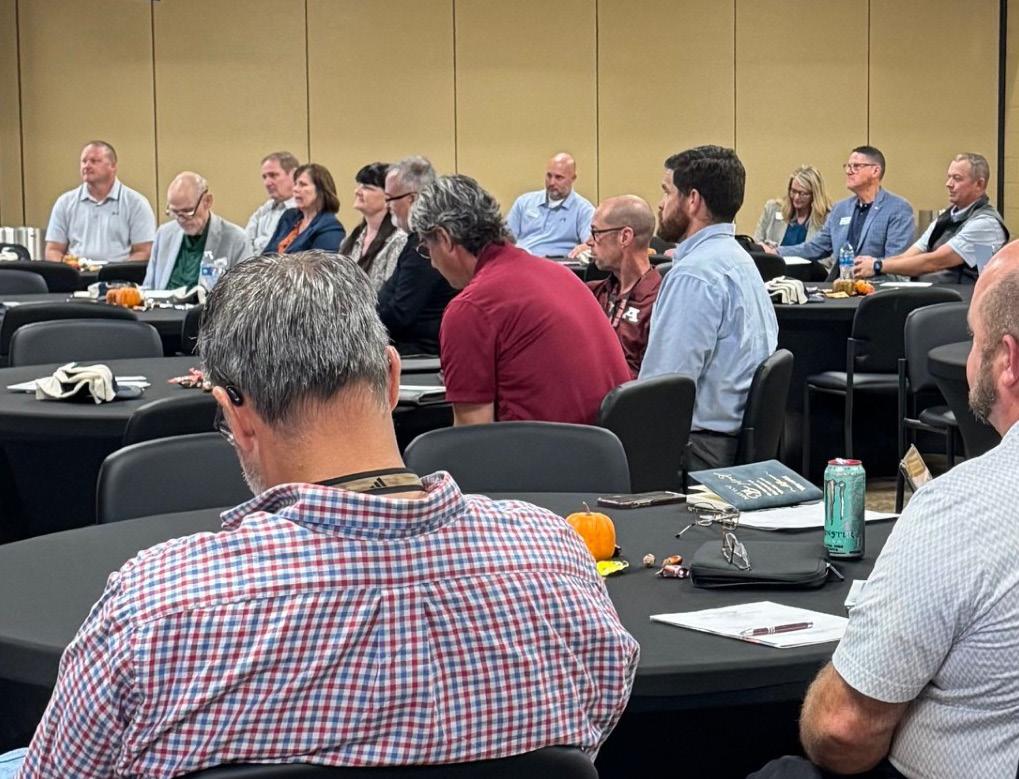

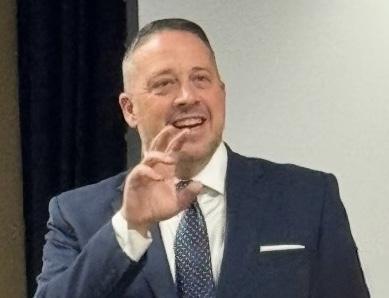
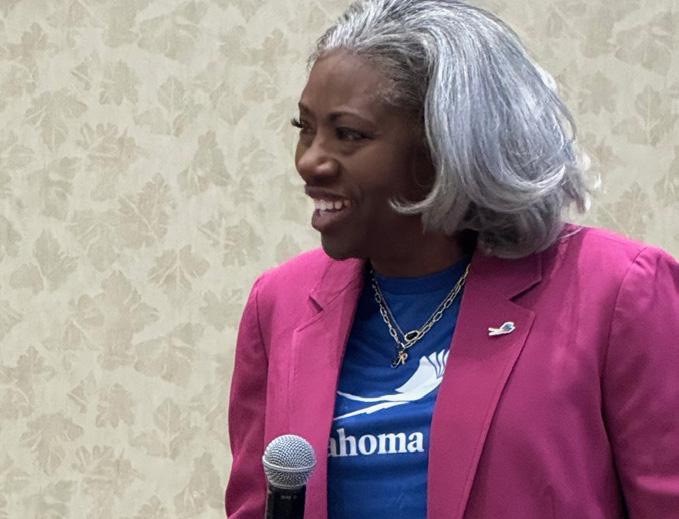
Superintendent
Norman Technology Center’s South Penn Campus.
OASA Super Regional Meetings
2025 Fall Schedule
September 19 ... TCASA: Tulsa Union High School Grand Hall
September 26 SE: Kiamichi Technology Center, McAlester
October 3
OKC Metro Area: Moore Norman Technology Center, Penn Campus
October 10 NE: Northeast Technology Center, Pryor
November 14 NW: High Plains Technology Center, Woodward
November 21 .... SW: Caddo Kiowa Technology Center, Fort Cobb
SE Super Regional Meeting presentations were:
■ Early Childhood Special Education –Lee Northcutt, Supt., Caddo Schools
■ New Teacher Academy – Chris Gammon, Director of instruction and Finance, and Laura Bullock, Director of Special Services and Accountability, Idabel Schools
■ Senior Internship Program and Take Flight Curriculum – Paula Meadows, Deputy Supt., McAlester Schools
■ Aviation Program – Mark Moring, Supt., Durant Schools
OASA District 7 Super Regional Meeting presentations were:
■ STEP Program and Bridges of Moore Program – Dr. Robert Romines, Supt., Moore Schools
■ OTEP and How OKC Schools Is Using the Program – Dr. Jamie Polk, Supt., OKC Schools
■ “What Makes You Happy as a Superintendent?” Superintendent and New Teacher Visits to Classrooms
– Dr. Nick Migliorino, Supt., Norman Schools
Thanks to our lunch sponsor, Coryell Roofing.

Oklahoma City-area school leaders gathered at the OASA Super Regional at Moore Norman Technology Center’s South Penn campus on Oct. 3.
Moore Public Schools Superintendent Dr. Robert Romines took the microphone at the OASA OKC Super Regional.
Oklahoma City Public Schools
Dr. Jamie Polk at the Super Regional meeting at Moore
Mark Moring, Superintendent of Durant Public Schools, talked to education leaders at the OASA Southeast Super Regional about the district’s aviation program.
OASA Southeast Super Regional attendees met on Sept. 26 at Kiamichi Technology Center’s McAlester campus.
Caddo Public Schools Superintendent Lee Northcutt led a session on early childhood education at the OASA Southeast Super Regional meeting.
The Policy and Advocacy Committee began its planning for the 2026 OASA Goals and Priorities and will provide a report to the OASA Executive Committee in October. We have a focus area on Student Achievement in Math and Literacy, continuing funding for the literacy program now in its third year. School Safety is another focus by continuing funding for the School Safety program now in its third year. Focus on Support for Students with funding is important for more counselors to assist students with mental health needs and for more time with students. Operational Funding is another focus area to help districts with the ever-increasing costs of insurance and support for other essential services.


Say hello to Rooms
apptegy.com

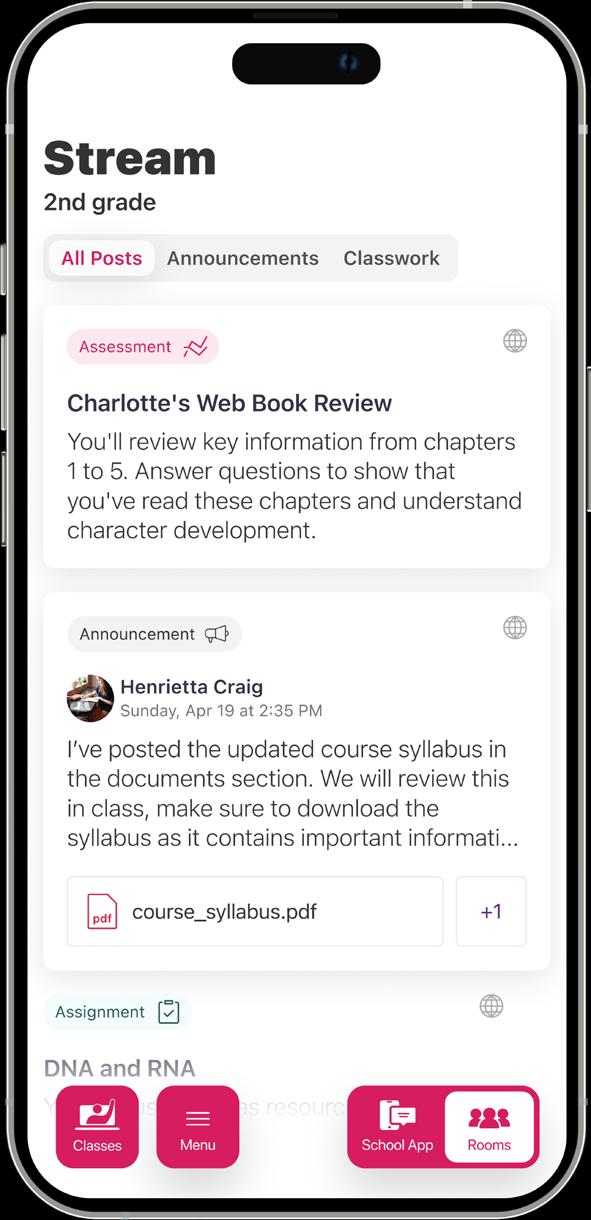
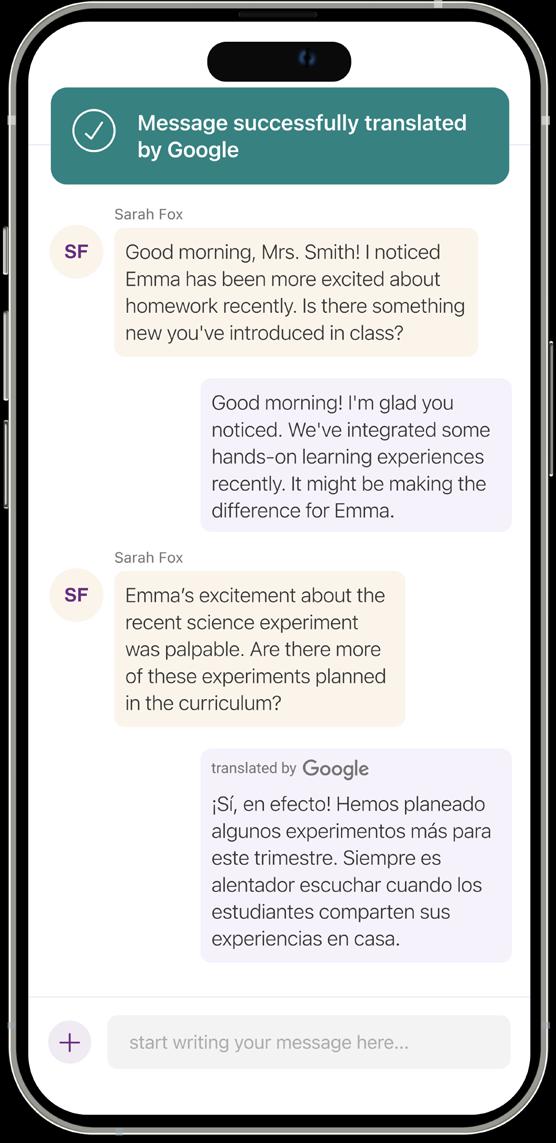

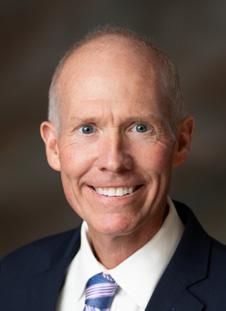
OASSP / OMLEA
Chris LeGrande, OASSP/OMLEA Executive Director
OASSP UPDATE
Our members are the lifeblood of CCOSA and its affiliates, and membership is the driving force behind our growth, advancement, and unity as an association. I am proud to share that active membership in OASSP reached a high of 910 school leaders during the 2024–25 fiscal year. This achievement reflects the strength and dedication of our profession.
As we look ahead, let us continue building on this momentum by encouraging colleagues, associates, and fellow administrators to join CCOSA. Strength in numbers allows us to amplify our collective voice, enhance professional learning opportunities, and expand the resources we provide to leaders across Oklahoma. If you have not yet renewed your membership for 2025–26 or if you know someone interested in joining, please visit our membership portal. Membership renewal must be completed electronically each year through this portal. Should you experience any log-in difficulties or require assistance, please reach out through the Contact Us page on our website or call the CCOSA office at (405) 524-1191. Together, we will continue to strengthen leadership and support public education in Oklahoma.
On Thursday, September 11, 2025, the OASSP Executive Committee met at the CCOSA Office in Oklahoma City and via Zoom. The committee, which includes elected officers, award-winning principals, and regional representatives, reviewed and approved the minutes from
the previous meeting as well as the OASSP financial report. Members received several key updates, including the Career Technology report, the NASSP Legislative report, and the Executive Director’s report. The committee also discussed potential dates for upcoming OASSP/ OMLEA conferences.
Additional discussions focused on committee assignments and reports in the areas of membership, professional development, legislation, awards, and bylaws. NASSP State Coordinator Dr. Eric Fox also provided a demonstration on the effective use of AI tools to contact elected officials and share positive news about Oklahoma schools. For a complete list of OASSP Executive Committee members and their contact information, please visit www.ccosa. org/oassp/board
TeleLEAD, Oklahoma’s virtual leadership network for principals, is back for its sixth year. Co-hosted by OSU’s Project ECHO program and CCOSA, this dynamic learning series resumed on September 3 and continues to meet on the first and third Wednesday of each month from 10 a.m. to 11 a.m.
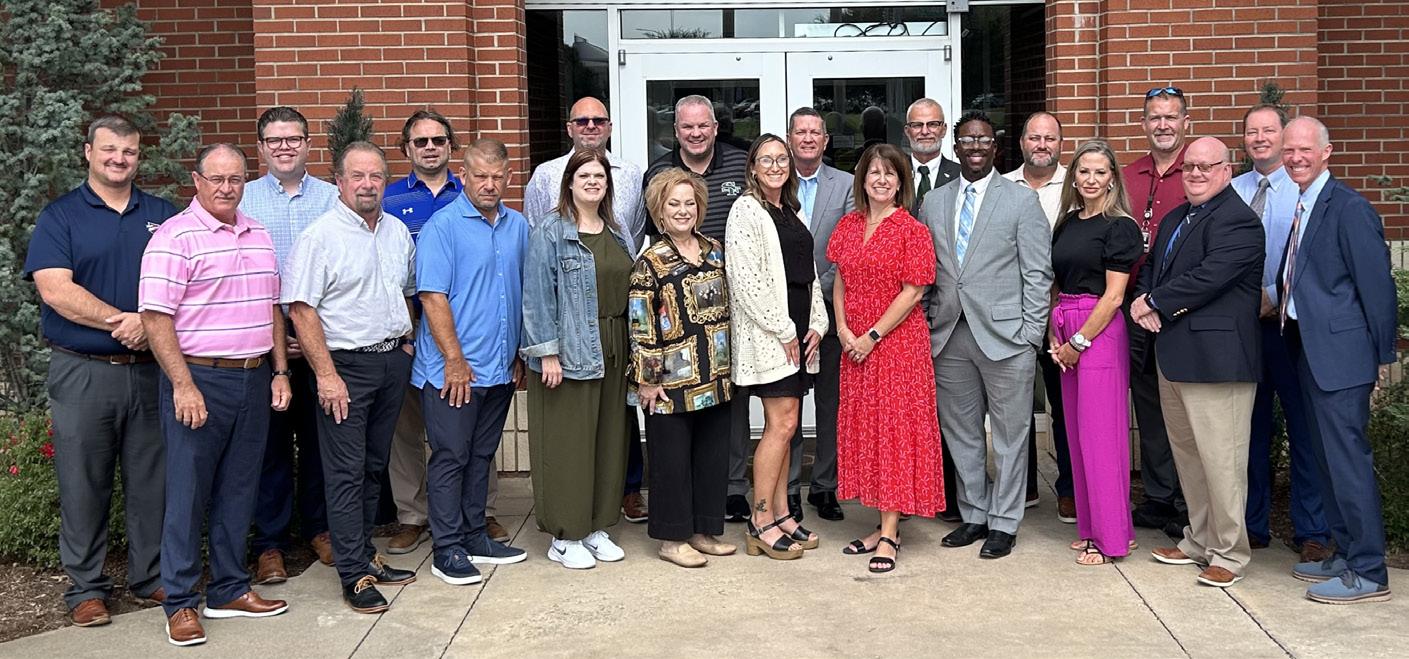
The TeleLEAD HUB team includes:
Traci Newell, Principal, Elgin Lower Elementary School
Dr. Kas Nelson, Principal, Vici Elementary School
Blaine Wise, Principal, Glenpool Middle School
Dr. Eric Fox, Assistant Principal, Jenks High School
Glen Abshere, Executive Director, OAESP Chris LeGrande, Executive Director, OASSP/OMLEA
Our first session focused on strategies for rebuilding academic culture and improving assessment performance. This timely topic drew more than 30 engaged participants. TeleLEAD is designed to provide practical, solutions-oriented support for today’s school leaders, addressing the most pressing challenges facing Oklahoma’s public schools.
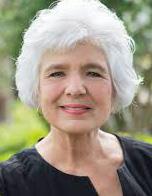
Dr. Barbara Sorrels
Each year school personnel encounter an ever-increasing number of students who have experienced some degree of adverse childhood experiences. CCOSA is here to help. School leaders and teachers are invited to Reaching & Teaching Children
Exposed to Trauma, a two-day training from Dr. Barbara Sorrels, the Executive Director of The Institute for Childhood Education, a professional development and consulting firm for those who live and work with children. This training will equip educators to understand trauma and develop practical strategies for stronger classroom and learning environments for trauma-exposed students. Participants will gain a stronger understanding of the systems, approaches, and processes that allow children at any age to progress in
Members of the OASSP Executive Committee met at the CCOSA Office in Oklahoma City on September 11.
learning and achieve skills for a successful, nurturing school experience. Each participant will receive a copy of Dr. Sorrels’ 2015 book of the same name, a resource of tools and strategies to help educators connect with harmed children and start them on the path to healing.
This two-day training will be offered in-person four times this school year: October 29-30, 2025, at the CCOSA Office in OKC; December 2-3, 2025, at Tulsa Technology Lemley Campus; January 27-28, 2026, at the CCOSA Office; and April 7-8, 2026, at the Tulsa Technology Lemley Campus.
To register for one of the upcoming trainings, visit this link.
Join us on February 10–11, 2026, for the annual OASSP/OMLEA Leadership & Learning Conference, hosted at the Hilton Garden Inn Conference Center in Edmond, Oklahoma.
This year’s theme, “Reignite: Passion, Purpose & Possibility,” will set the stage for one-and-a-half days of inspiration, collaboration, and growth. The conference will feature dynamic keynote presentations from Dr. Darrin Peppard and Joe Beckman, along with a wide variety of breakout sessions tailored specifically for middle-level and secondary educators and school leaders.
We encourage you to bring your teams and instructional leaders to take full advantage of this outstanding professional learning opportunity. Furthermore, consider presenting a breakout session during the conference. Requests for presentations are now open and can be submitted using this link. Conference registration is open now. Don’t miss your chance to participate in this premier event for leadership, networking, and learning!
OMLEA UPDATE
On Thursday, September 25, the OMLEA Executive Committee convened at the CCOSA Office and via Zoom. The committee addressed several key items, including the approval of financial records, selection of potential conference speakers, consideration of dates for the joint OASSP/OMLEA conference, and a review of the Administrator of the Year application process.
The meeting was led by OMLEA President John Potter. During the session, it was announced that Mr. Potter, along with OMLEA President-Elect Skeeter Sampler, OMLEA Assistant Principal of the Year Dedee Emory, and OMLEA Executive Director Chris LeGrande will attend the AMLE National Conference. The conference will take place November 5–8 at the Indianapolis Convention Center in Indianapolis, Indiana. You can access our OMLEA Executive Committee members and their contact information at https://www.ccosa.org/omlea/board.

27, 2025.
Congratulations to Chouteau Middle School and Principal Michelle Brumley for being named 2025 Association for Middle Level Education (AMLE) School of Distinction! This honor recognizes schools that demonstrate exceptional achievement, excellence in instruction, and a strong commitment to continuous improvement and fostering positive learning environments. Chouteau Middle School earned this prestigious distinction through a rigorous evaluation process that included a comprehensive school-wide assessment, detailed improvement planning, and stakeholder interviews with staff, students, and families.
As part of this recognition, the school will share its accomplishments at the AMLE25 national conference in Indianapolis, Indiana, November 5-8, 2025.
In its fourth year, the Oklahoma Principal Leadership Institute takes a deep dive into those essential skills an effective school leader possesses. Designed for experienced administrators, this yearly cohort completes a series of training modules including creating a personal leadership vision, analyzing student data, navigating crucial conversations, managing human resources, and cultivating advocacy skills. The 2026 cohort, consisting of 21 school leaders, convened for the second time this school year on September 30-October 1, 2025. Although registration has closed for this year’s institute, look for application information for the next OPLI cohort in April 2026.
OMLEA’s membership is composed of OAESP, OASSP, or other CCOSA members who serve middle-level students. You can join OMLEA as a free option when you become a member of one of CCOSA’s umbrella associations. Presently, we have 746 OMLEA members. If you have yet to renew your membership for 2025-26, you can do so by accessing our membership portal Encourage your colleagues and principal friends to join CCOSA today! We are certainly stronger together where our collective voice is powerful.
October is recognized as National Principals Month, a time dedicated to celebrating the essential role school principals play in shaping the success of the school community. Principals work tirelessly and selflessly to create positive school environments, support teachers, and foster student achievement. National Principals Month is an opportunity to honor their dedication, leadership, and the profound impact they have in their respective school settings. Whether managing the operations of schools, advocating for resources, or building strong relationships with students, families, and staff, principals are the driving force behind educational excellence! Join CCOSA, NASSP, and NAESP as we recognize our amazing Oklahoma principals. For more information about National Principals Month, visit www.principalsmonth.org ■
Chouteau Middle School faculty and staff at the AMLE School of Distinction celebration on August
•
•
•
•
• Compliant with Oklahoma Statutes §70-5-115-H
•
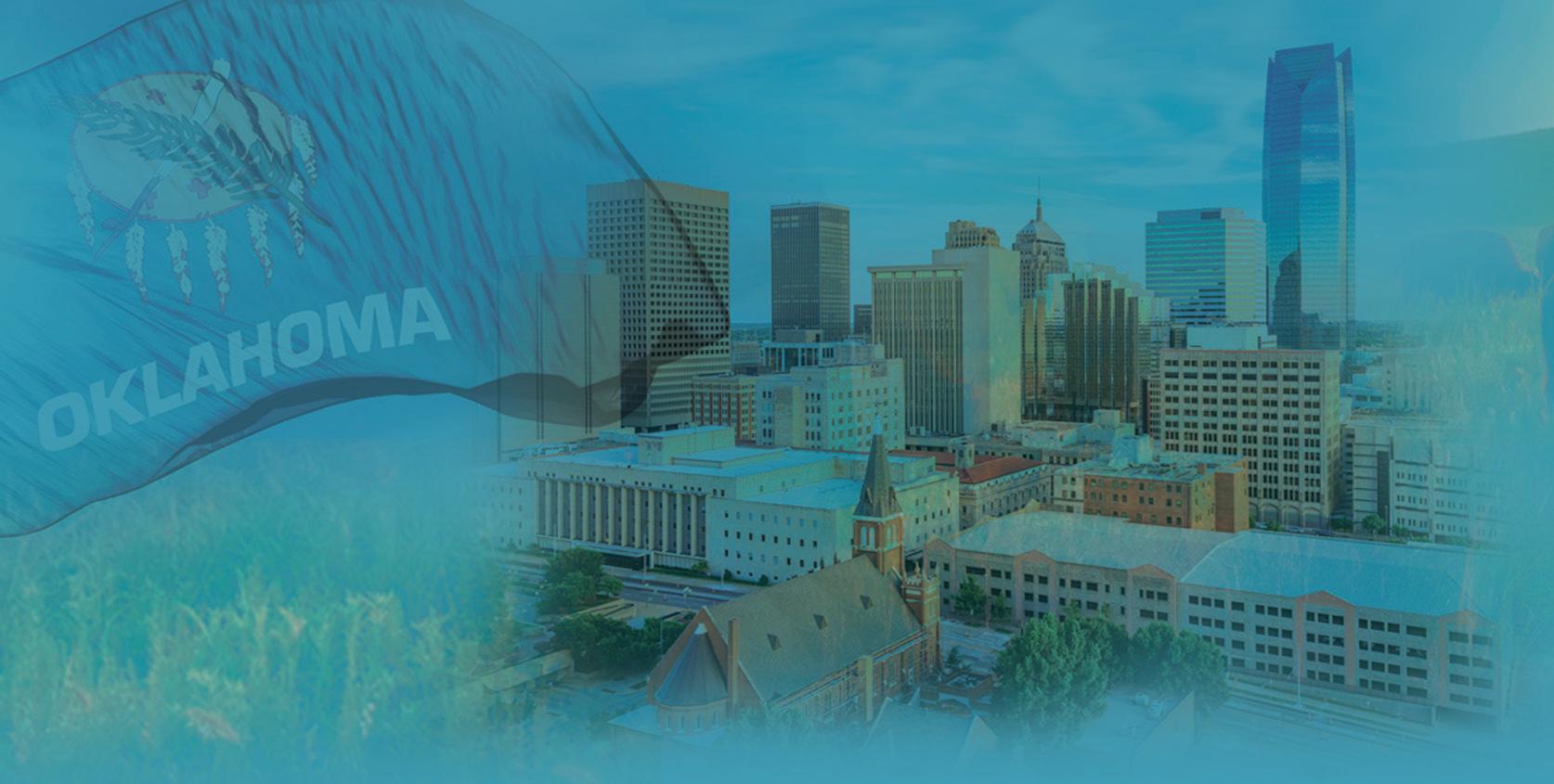
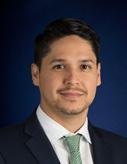
ADMINISTRATOR:

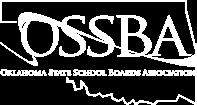

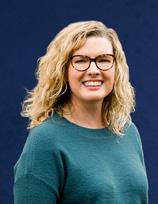

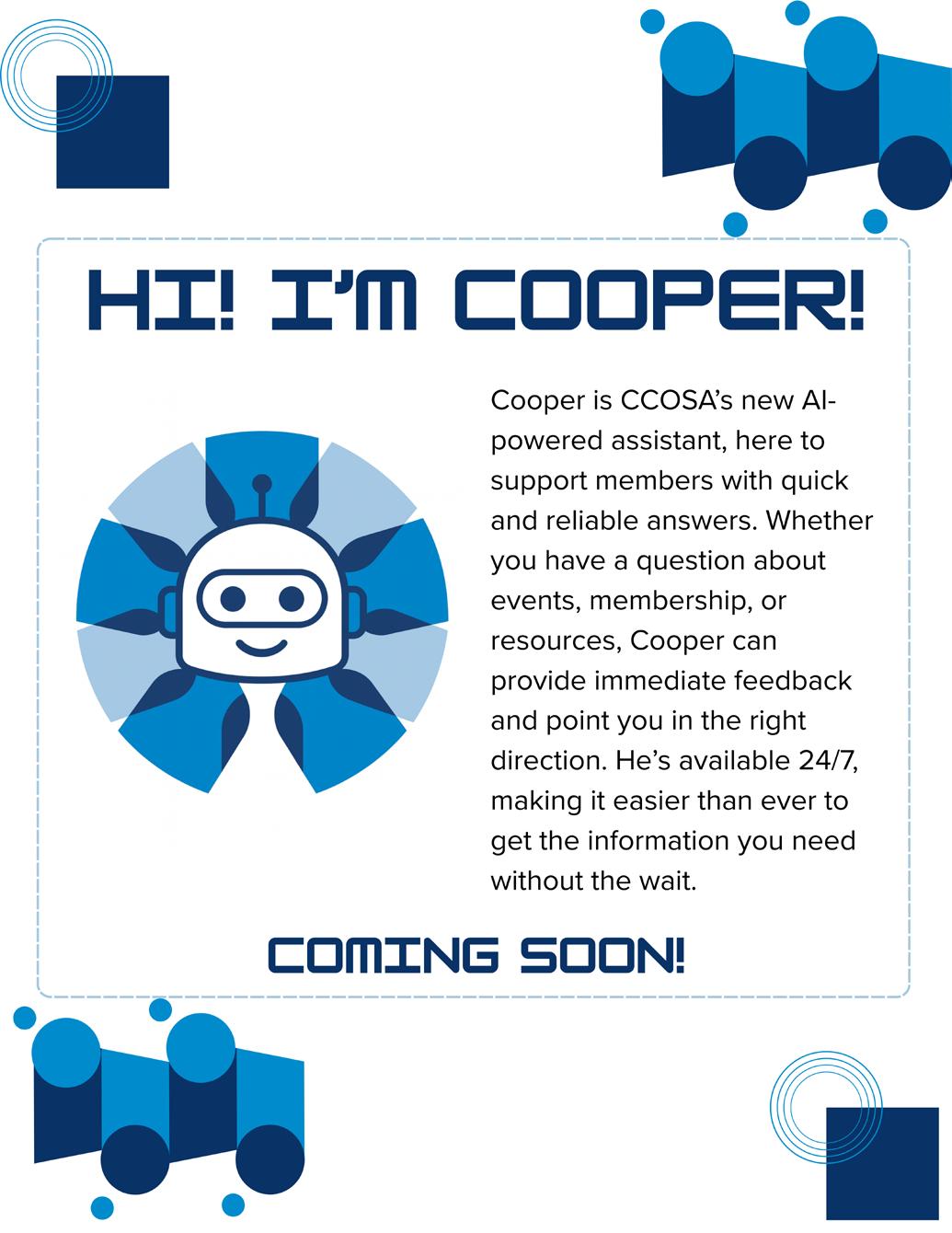





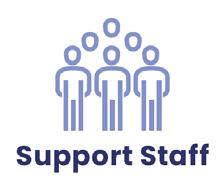


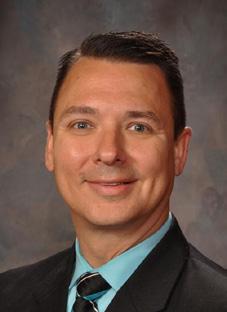
OAESP
Glen Abshere, OAESP Executive Director
OAESP membership had tremendous growth the last two years! OAESP ended the year with a record of 905 members, which represented a 4.3% increase. We have 822 members so far this year. It is time to renew your membership for the 2025-26 school year. Join online today on our membership portal. Don’t lose out on your membership benefits! Thank you for being a member of CCOSA and OAESP. Encourage others to join.
Dr. Kas Nelson, Principal of Vici Elementary School in Vici Public Schools, will be recognized in Washington, D.C., on October 23-24, 2025, at the National Distinguished Principals Program. Congratulations Kas!
The NAESP National Outstanding Assistant Principal (NOAP) award will recognize an elementary assistant principal of the year. The assistant principal nominee must be a member of OAESP and NAESP and have served as a principal for two full years to be considered for nomination. Please email this completed nomination form to lynne@ ccosa.org. Nominations are open through October 24.
The OAESP Leadership Conference, “Collaborate to Elevate,” will be held February 25-26, 2026, at the Embassy Suites OKC Downtown/Medical Center. The OAESP Leadership Conference is a day-and-a-half of learning. The opening keynote speaker will be awardwinning author and educator Jessica Gomez. Registration is open now at this link. We hope you will join us!
At the OAESP Presidential Election, the OAESP candidates for president this year will be Dr. Kas Nelson, Principal of Vici Elementary School in Vici Public Schools, and Charla Matthews, Principal of Grove Upper Elementary School in Grove Public Schools. Both candidates will speak at the OAESP Leadership Conference on February 25-26, 2026. The election will take place after the conference.
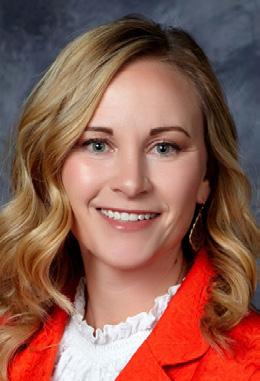
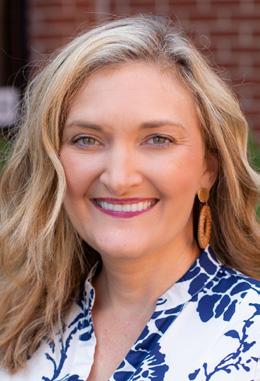
OAESP Presidential Candidate Dr. Kas Nelson is the Principal at Vici Elementary School.
Charla Matthews, Principal of Grove Upper Elementary in Grove Public Schools, is a candidate for OAESP President.
TeleLEAD is Oklahoma’s Principal Leadership network for ongoing virtual conversations, hosted by OSU’s Project ECHO and CCOSA. TeleLEAD began on September 3 with ongoing meetings the first and third Wednesday of the month from 10 a.m. to 11 a.m. Our Hub Team members include Traci Newell, Elgin Lower Elementary Principal; Dr. Kas Nelson, Vici Elementary Principal; Dr. Eric Fox, Jenks High School Assistant Principal; Blaine Wise, Glenpool Middle School Principal; Glen Abshere, OAESP Executive Director; and Chris LeGrande, OASSP/OMLEA Executive Director. TeleLEAD is a virtual discussion through Zoom with great insight into complex issues facing public schools.
The OAESP Principal Podcast is a production of OAESP. New episodes are released every two weeks on Tuesday morning. You can listen anywhere you listen to podcasts. Search for “The OAESP Principal Podcast” and subscribe to receive alerts when new episodes are released. This podcast is designed to elevate the voices of Oklahoma principals and assistant principals. New interviews are being scheduled now with Oklahoma leaders for future episodes. If you would like to be on the podcast, email Glen Abshere at abshere@ccosa.org.
The New Principals Academy is designed to promote an interactive discussion on topics essential for participants to develop understanding and knowledge of the leadership role at the school level. The purpose is to provide guidance to steer an early career principal or assistant principal through the initial period of adjustment as a beginning administrator and set the foundation for a long and rewarding career as a school administrator. The New Principals Academy is offered in two different cohorts, each with four sessions/trainings. One cohort meets at the CCOSA Office in Oklahoma City and the other in Tulsa at the Tulsa Tech Lemley Campus. Our first meeting took place in September. We have two great cohorts with great leaders!
The Oklahoma Principal Leadership Institute kicked off its third cohort in July. This year-long, seven-day training is designed for principals and assistant principals who are beyond the first year of service. This cohort takes a deep dive into essential skills of school leaders to be effective leaders. This group of elementary and secondary principals from across Oklahoma met for the first time on July 22-24 at the CCOSA Office in Oklahoma City for three days of professional learning. Participants discussed strategies to identify strengths among staff members, develop vision and mission statements, influence positive school culture, and strengthen professional learning communities. OPLI also included white water rafting and dragon boat rowing at the OKC RiverSport Adventure Park. We are excited to continue ongoing professional learning with this OPLI cohort in October and March! The application period for this institute is now closed for this year. The application period for the next cohort will open in March 2026.
The Principal Mentoring and Coaching program is designed for those supervising other administrators or those who serve as a mentor. In this program, participants get a hands-on approach to problem-solving by participating in a triad conversation, taking turns serving as mentor and mentee. This program meets three times in the fall semester. ■



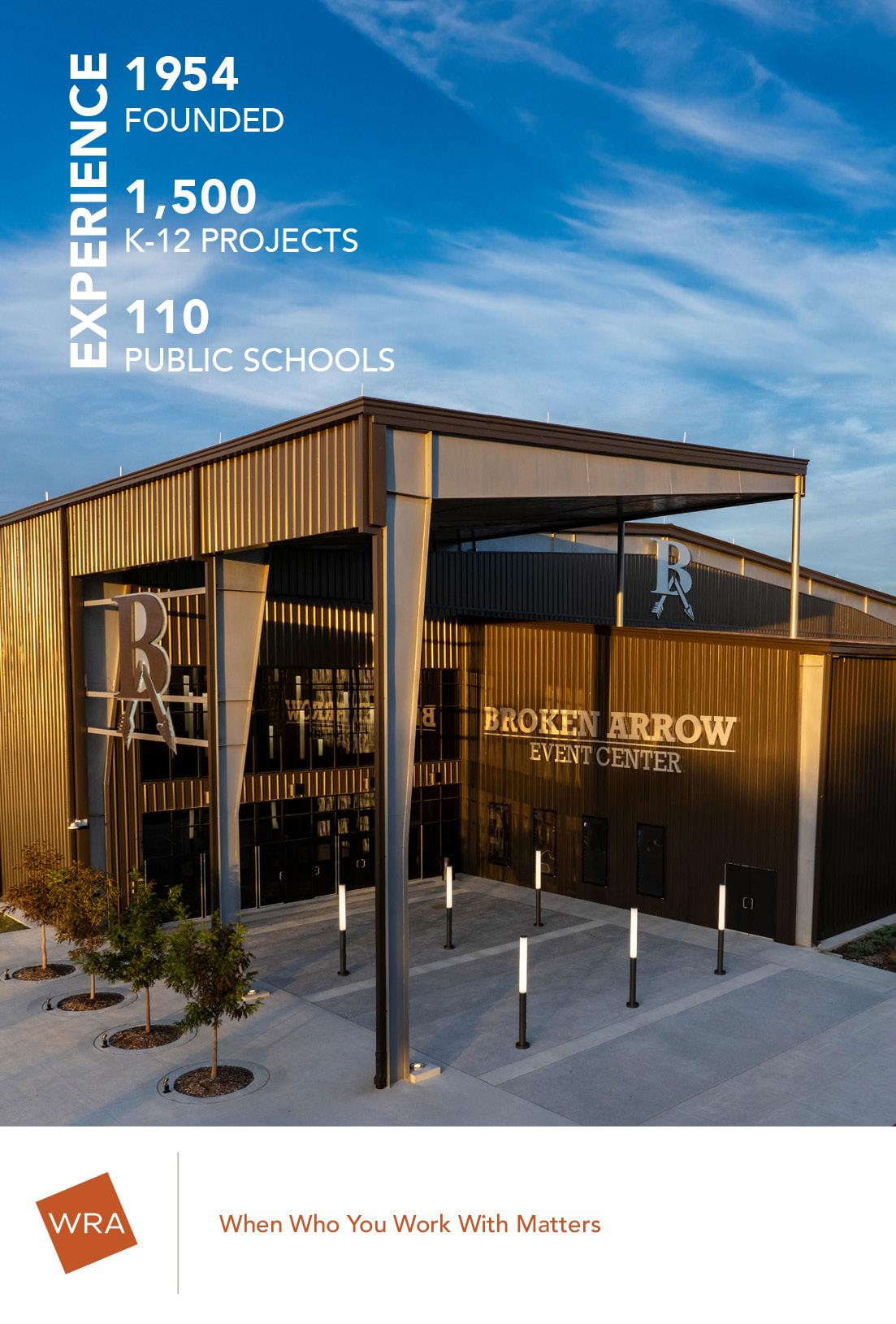
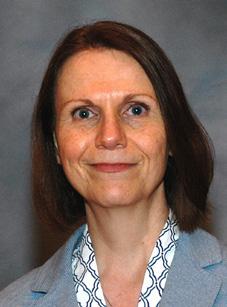
ODSS
Andrea Kunkel, CCOSA General Counsel & ODSS Executive Director
Welcome, all! What a great time for education in Oklahoma!
ODSS is off to a fast start this year. In fiscal year 2025, we had our best ever membership year with 239 active members as of June 30. Of course, we’re trying to beat that record this year. With almost 230 active members as of late September, we’re right on track.
Following our ODSS July 8 in-person boot camp focusing on newer directors, the New & Early Career group began virtual sessions on July 29. Since then, the group has held virtual meetings twice monthly, averaging between 90 and 110 participants per session. The 15 members of the ODSS Executive Committee and other experienced directors help create the meeting agendas, lead discussion, answer questions, and provide resources and encouragement. As always, the experienced directors are proving to be fantastic supporters for their newer colleagues. Many view it as their personal responsibility to the profession! These twice-monthly meetings will continue through October, with monthly meetings November through May.
The Section 504 coordinators’ virtual group has started its second year and is meeting monthly, August through May. That group discusses 504 topics from student eligibility to discipline to extracurricular participation and encourages collaboration among 504 coordinators from different districts.

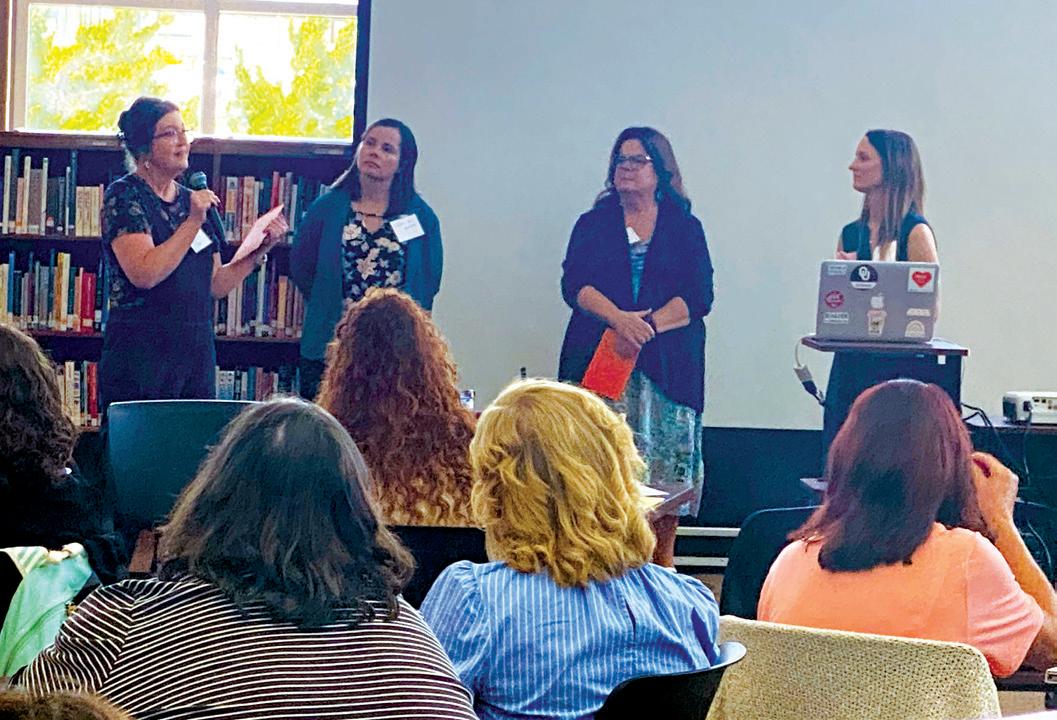
ODSS officers including President Michelle Dalton, Legislative & Policy Liaison Melissa Jarvis, President-Elect Leslie Burnett, and Past President Amy Swartz at the ODSS New & Early Career Special Education Directors Boot Camp at Yukon High School.
ODSS officers are working with our national affiliate – the Council of Administrators of Special Education (CASE) –to support their early November conference at the Omni in Oklahoma City. As the state directors’ group in the host state, ODSS is responsible for arranging small Oklahomacentric gifts for the officers from other CASE affiliates across the U.S. and Canada, helping plan experiences for conference participants, and hosting an ODSS booth where all visitors will find a welcoming spirit and a good snack. For answers to your questions about ODSS or any of our groups or projects, please contact Andrea at kunkel@ ccosa.org ■


Tuttle High School Softball Tuttle, Oklahoma
READ TO LEAD

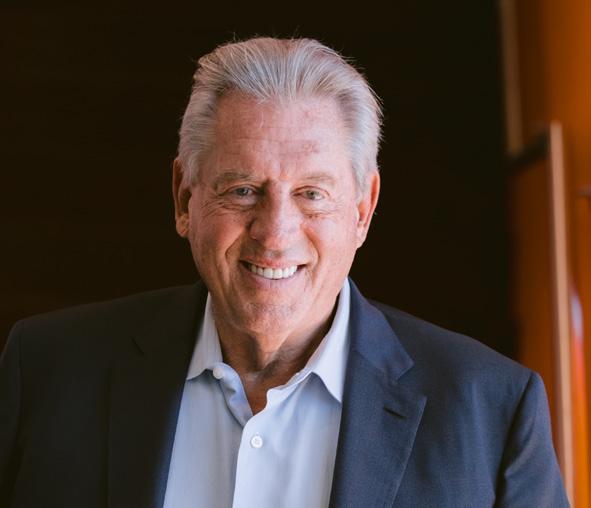
Introducing CCOSA’s John C. Maxwell Book Series




Great leaders never stop learning, and few voices have shaped the modern conversation on leadership more than John C. Maxwell. Our Read to Lead series will feature four of his most impactful works: The 21 Irrefutable Laws of Leadership, The 5 Levels of Leadership, LeaderShift, and his newest release, High Road Leadership. Each offers practical wisdom and timeless truths to help you lead with clarity, character, and confidence. As we revisit The 21 Irrefutable Laws of Leadership on the next page, explore The 5 Levels of Leadership here, and discuss LeaderShift and High Road Leadership in upcoming issues, we’re paving the way toward an unforgettable highlight – the CCOSA Summer Leadership Conference, where Maxwell himself will take the stage as keynote speaker.
The 5 Levels of Leadership
By Dr. Pam Deering, CCOSA Executive Director
OVERVIEW
In The 5 Levels of Leadership, John C. Maxwell presents a practical framework for understanding and growing as a leader. His model emphasizes that leadership is not a title or position, but rather a process of influence that develops over time. Each level builds upon the previous one, guiding leaders toward greater impact and legacy.
THE 5 LEVELS
1. Position – People follow because they have to.
Leadership starts with a title or role. At this stage, influence is limited, and trust must still be earned.
2. Permission – People follow because they want to.
Leaders begin to build relationships and earn trust. Connection and communication create a healthy culture of mutual respect.
3. Production – People follow because of what you have done for the organization.
Results matter. Leaders demonstrate competence and drive progress, which earns credibility.
4. People Development – People follow because of what you have done for them.
Strong leaders invest in others, developing capacity, empowering growth, and multiplying influence.
5. Pinnacle – People follow because of who you are and what you represent.
The highest level of leadership comes through years of consistency and impact. Leaders leave a legacy by developing leaders who develop others.
KEY TAKEAWAYS FOR SCHOOL LEADERS
■ Leadership is a journey – growth requires moving beyond the “position” level.
■ Building trust and relationships (Level 2) is essential in education.
■ Results (Level 3) establish credibility but must be paired with a culture of care.
■ True impact comes at Levels 4 and 5, where leaders empower others and create long-term change.
■ Each school administrator can reflect on which level they are leading from and intentionally seek growth to the next stage.
REFLECTION QUESTIONS FOR DISCUSSION
■ At which level do you see yourself currently operating as a leader?
■ What practices could help you strengthen relationships with your staff and community?
■ How can you invest more intentionally in developing the leadership capacity of others in your school or district? ■
The 21 Irrefutable Laws of Leadership
(25th
Anniversary
Edition by John C. Maxwell)
A deeper dive into three principles relevant to K-12 education.
By Dr. Jeanene Barnett, CCOSA Director of Policy, Research & TLE and Chris LeGrande, Executive Director of OMLEA and OASSP

Leadership Laws for Transformational Impact in Oklahoma Public Schools
In the dynamic landscape of public education, effective leadership is not optional –it is essential. John C. Maxwell’s The 21 Irrefutable Laws of Leadership offers timeless principles that resonate deeply within the PK–12 public school context. Among the 21 laws, three stand out for their practical and transformative relevance: The Law of the Lid, The Law of Navigation, and The Law of Connection. Each law provides a foundational lens through which school leaders can elevate performance, culture, and student outcomes.
1. The Law of the Lid: Leadership Ability Determines Effectiveness
Summary
Leadership ability acts as a lid on the effectiveness of any organization. A school will only rise to the level of its leadership.
Application
to Public Schools
In the PK–12 setting, this law underscores the reality that even the most well-intentioned reform efforts or programs will falter if school leaders do not possess the capacity to lead with clarity, vision, and resilience. District and site-level administrators serve as multipliers – or limiters – of school improvement. Investing in leadership development for principals, assistant principals, and central office leaders is critical. As Maxwell puts it, raising the leadership lid raises the entire organization.
Implication
Educational outcomes improve when leadership capacity is systematically developed. Leadership coaching, targeted professional development, and succession planning are strategic necessities – not luxuries.
2. The Law of Navigation: Anyone Can Steer the Ship, but It Takes a Leader to Chart the Course
Summary
Leaders chart the course by seeing the destination clearly, anticipating challenges, and communicating the plan.
Application to Public Schools
In school leadership, vision is not enough – planning, foresight, and strategy are essential. Whether implementing new instructional models, navigating budget reductions, or responding to crises such as learning loss or staffing shortages, the ability of school leaders to “navigate” is vital. The superintendent and/or principal, like a captain, must chart a path that includes all stakeholders – teachers, students, families, and the community. As Maxwell notes in the “Law of Influence” chapter, “He who thinks he leads, but has no followers, is only taking a walk.”
Implication
Strategic planning must go beyond compliance checklists and become a living document that drives daily decisions. Data analysis, stakeholder feedback, and intentional communication plans form the backbone of effective navigation in schools.
3. The Law of Connection: Leaders Touch a Heart Before They Ask for a Hand Summary
Leaders must connect with people emotionally before they can influence them.
Application to Public Schools
Relationships are central to the work of public education. For Oklahoma school leaders, connection is more than visibility in the hallways – it is about building trust, demonstrating empathy, and cultivating a culture of belonging. Whether inspiring teachers, engaging parents, or
addressing student behavior, emotional intelligence is a leadership imperative. Remember that old saying: People don’t care how much you know until they know how much you care.
Implication
Leadership success in schools depends on meaningful relationships. Listening actively, being accessible, and showing authentic care are not soft skills – they are essential leadership strategies that build morale and sustain momentum.
CONCLUSION:
In an era marked by complexity and change, Oklahoma leaders must remain steadfast and embody principles that withstand shifting educational landscapes. The Law of the Lid challenges leaders to grow in order to lift their schools. The Law of Navigation reminds them to lead with foresight and clarity. The Law of Connection reinforces that influence begins with relationships. Together, these laws serve as a compass for school leaders seeking to lead with excellence, integrity, and impact. ■
Editor's Note: This column is reprinted from the Summer 2025 issue of Better Schools


